
A STORY BOOK ADVENTURE IN SNOWY STOCKHOLM - 2017
Before I arrived in Lapland in late November 2017 to start working for 5+ months there as a tour guide, I seized the opportunity of having some free time and travelled a bit through Scandinavia. I was with a friend who had never visited the Scandinavian capital cities so we stopped in Copenhagen, Stockholm and then Helsinki before heading up to the North of Finland. If you followed my journey through Instagram you probably know that I’ve lived in Sweden for a year in 2015-2016 and already had the chance to visit both Copenhagen and Stockholm back then. But, needless to say, these two cities count among the loveliest places I have ever been and I was so glad to go back. Last time I visited it was Spring, and this time exploring them in November offered me a very different experience.
So, after three days in Copenhagen we took the train across the Öresund bridge and Sweden to reach Stockholm on a gloomy November evening. At this point I was feeling overexcited and wanted to jump everywhere because I WAS FINALLY BACK IN SWEDEN. Ever since I left this country after ten months in June 2016 my heart had been longing and yearning to go back. Sweden is a place where I feel welcome, at ease and at home. Where everything seems so much easier, well except maybe for their absurdly cute and weird language that I’ve spend 3+ years learning but still have difficulties to master. Maybe some of you who lived abroad will understand, but it’s a strange feeling to realise that everything in a place feels home and familiar despite being thousands of kilometers away from the place where you grew up. The smells, the street names, the sounds, the shops, the adds… It all feels so familiar. When I’m in Sweden and walking the streets, it feels as if I spent so many years there, not just one but dozens, hundreds, thousands. It’s my special place.
But what I didn’t know was that something was going to make this trip a little bit (well no, a lot) more special and magical. On the following morning when we woke up after a restful night in our tiny Airbnb, there was something different in the air, and even before rushing towards the window I immediately knew what it was: snow. It was snowing heavily, and my heart was leapping with joy. You might already know that but I have a special relationship with snow, there’s nothing I love more than it, it’s my kind of weather. Moreover I had been dreaming to see Stockholm under the snow one day, daydreaming about how magical it would look already back on my first visit. And there it was: a sleepy, peaceful, quiet, carpeted in white and delightfully cold Stockholm, waiting for me to wander through its many islands and streets.
Gamla Stan
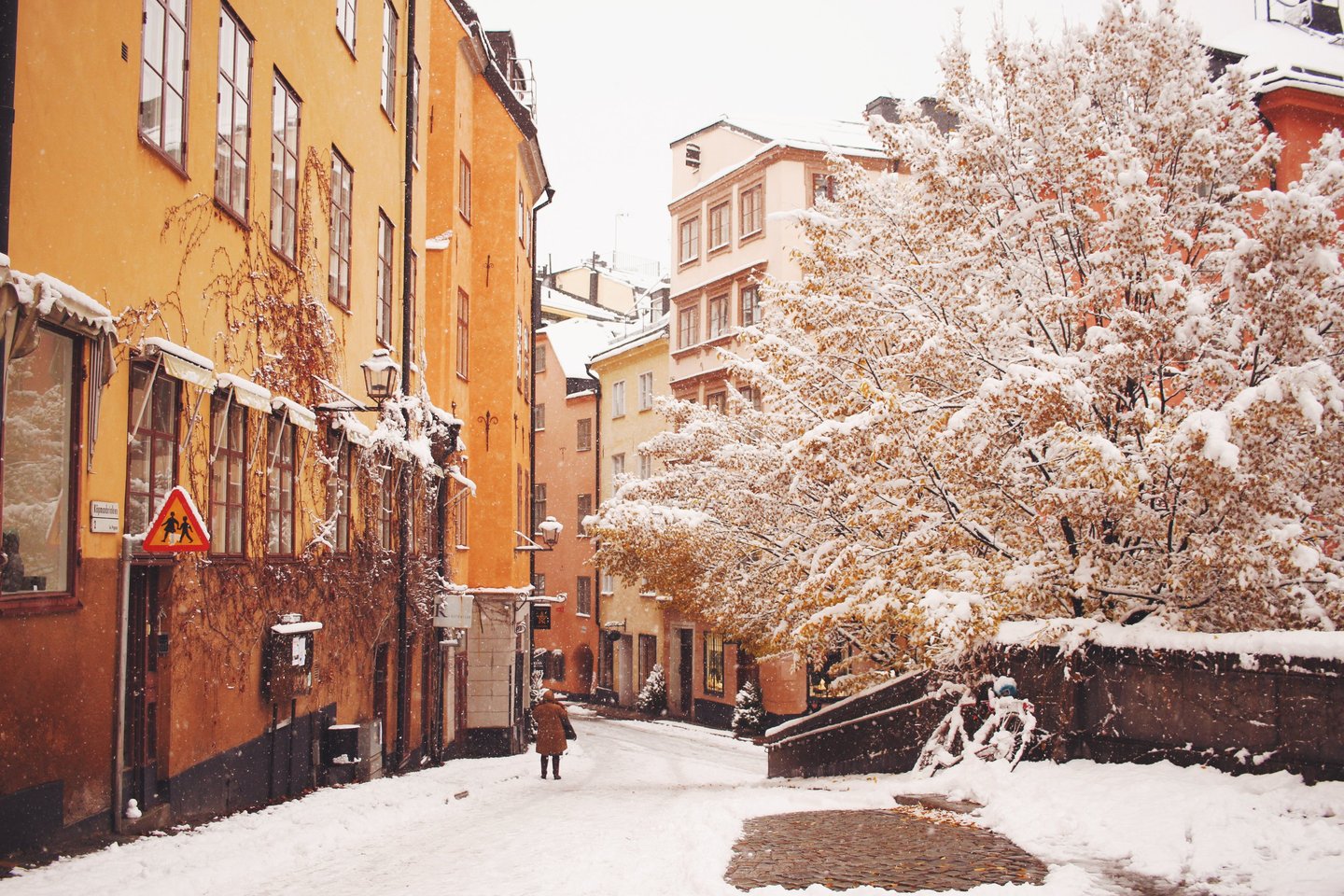

So we decided to take the tunnelbana and first headed towards Gamla Stan, the Old Town. As the medieval and oldest area of the city, it holds many narrow and winding streets dotted with small meeting squares adorned with ancient and colourful houses with gable roofs. It has hundreds of cute shops and cosy cafés, the air smells like cinnamon, and the many cobblestone streets feel like a labyrinth of everlasting alleyways weaving between ochre, faded mustard and rust-coloured houses. The Christmas decorations had already been set up and hundreds of plump Christmas trees were obendiently leaning against the houses walls. Gamla Stan is a place that will always look cute and lovely regardless of what the weather is like or which time of the year you’re visiting, but there, covered in white, it is something else entirely: the district looks straight out a story book.
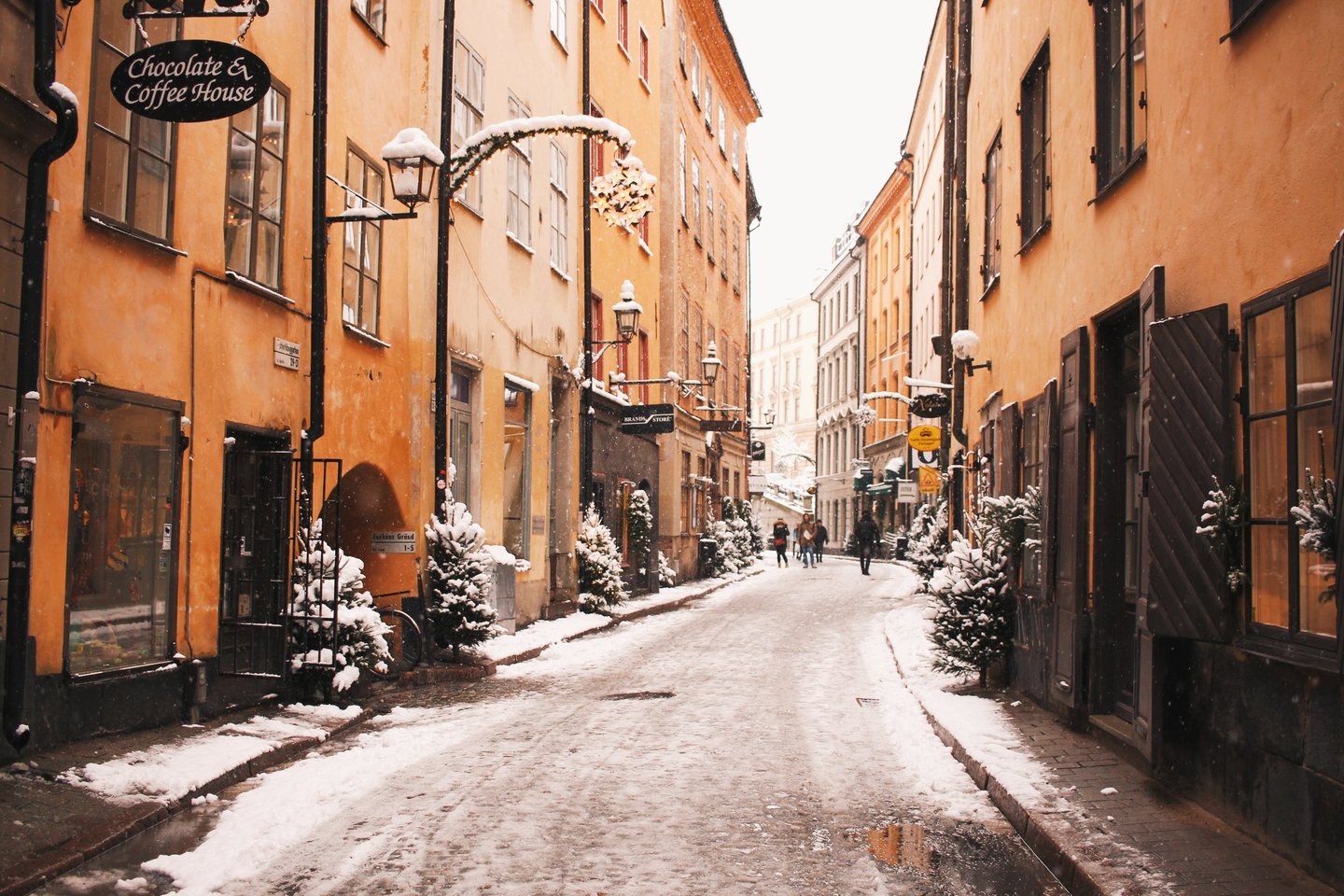

Wandering through those streets I felt like walking in a winter tale. It was as if Gamla Stan was a tiny town of its own, set on a small round island and surrounded by ice as far as the eye can see. A little secluded world, only reachable by boat and thus cut from the rest of the universe almost half of the year. A little secluded world where the winters are harsh and where everyone is busy making everything ready on time for Christmas. Where lanterns are lit at each alley’s corner, where heavy and fluffy snowflakes fall tirelessly from the white quilted and cottony sky on the high gable roofs and steep bell towers of the town. Oh my, I felt so inspired by the magic of this morning spent exploring this Middle-Age district under the snow. Who knows, maybe one day I’ll write a book set in the same kind of surroundings?

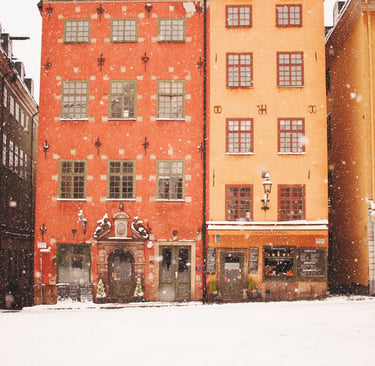
Then we reached Stortorget, the Old Town’s main meeting square. A giant Christmas tree had been put up in the centre of the square, ineluctable proof that the festive season was drawing nearer and nearer. Later, in December, dozens of little wooden red stalls and booths would be nestled and tucked in the small square for the annual Christmas market, selling sweets, reindeer smoked meat sausages, and traditionnal glögg (Swedish mulled wine), as well as Swedish handicrafts and handmade Christmas decorations. Already back in the 1520s Stortorget was hosting a Christmas market, and it has been an ongoing tradition ever since. And indeed, what better place for an old-fashioned Christmas market? Only looking at the building lining around Stortorget brings you back in time. Most of the façades here date back from the 1700s or 1800s but still stand on medieval walls. They were built to replace the medieval wooden houses that so often caught fire in those days that it was only allowed to built houses made of stone from the 1630s onward. Those beautiful houses adorned with stepped gable roofs were then owned by rich merchants or the ruling gentry.
It is always a place in which I can find some magic floating in the air, and this day, covered in its sleepy and fuzzy snowy blanket, it was even more so.
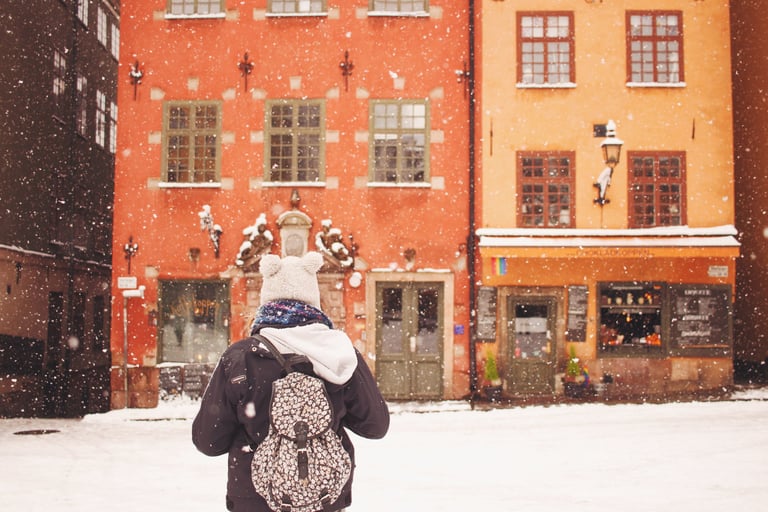
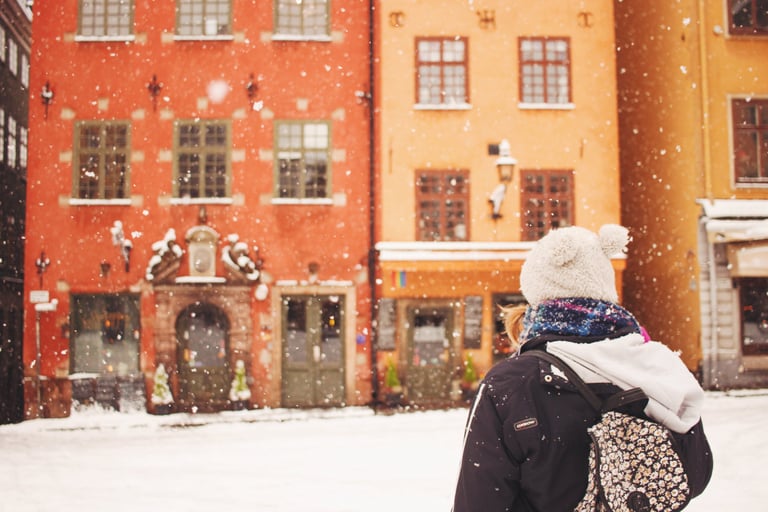


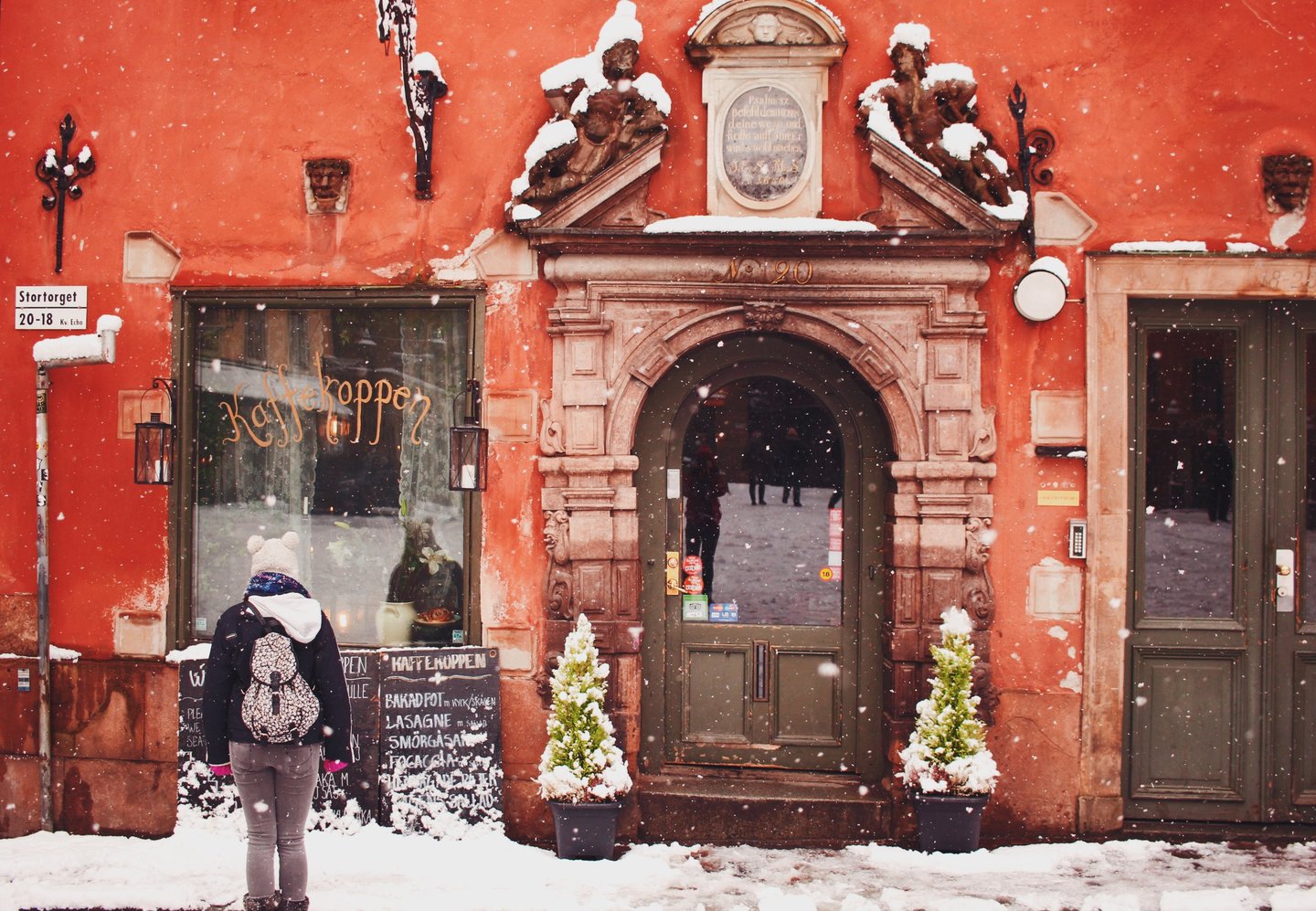

With red cheeks, cold hands and glittering eyes we decided to sat in Kaffekoppen for a little while, one of the cosiest and most popular cafés of the Old Town, to warm ourselves up with a steaming hot cup of tea and of course a kanelbulle, a traditionnal Swedish cinnamon bun. A perfect little “fika” as they say in Swedish.
RIDDARHOLMEN
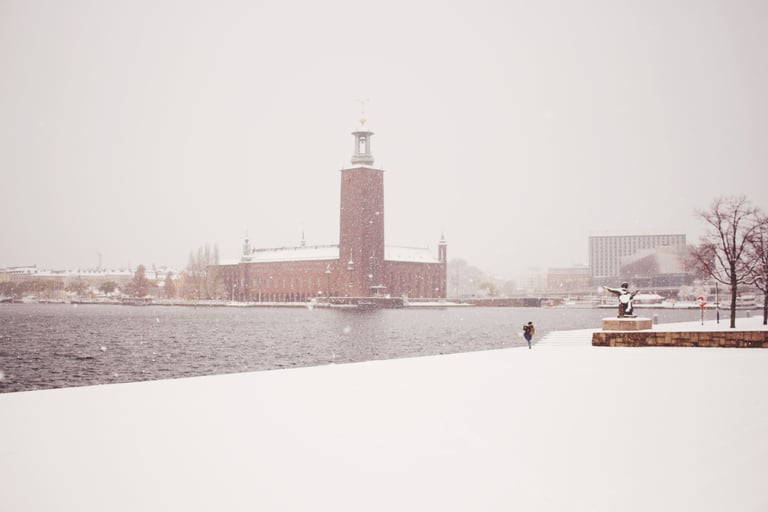
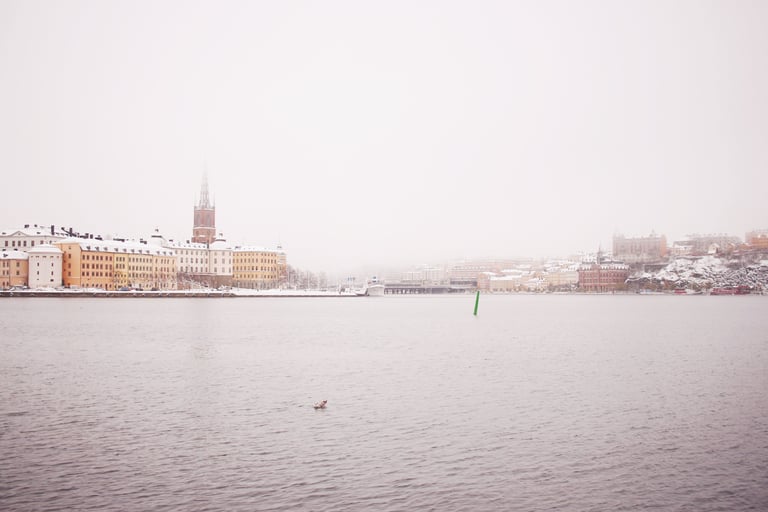


View on Kungsholmen (left) and Södermalm (right)
Then we took a walk around Riddarholmen, of the smallest islets of Stockholm, located immediately next to Gamla Stan and connected to it by a bridge. Riddarholmen is mostly famous for its beautiful central church, but I like to go there for the views you can get on the other islands and districts : Kungsholmen, one of the biggest distrits, on the Northern shore of the lake Mälaren, which flows here into the Baltic sea. Södermalm, the Southern district of Stockholm, on the other side of the lake. And of course Gamla Stan. If you want you can even get on a boat (see the picture below) to navigate between all those islands. Another magical way to visit Stockholm and get different vantage points on this city built on water.
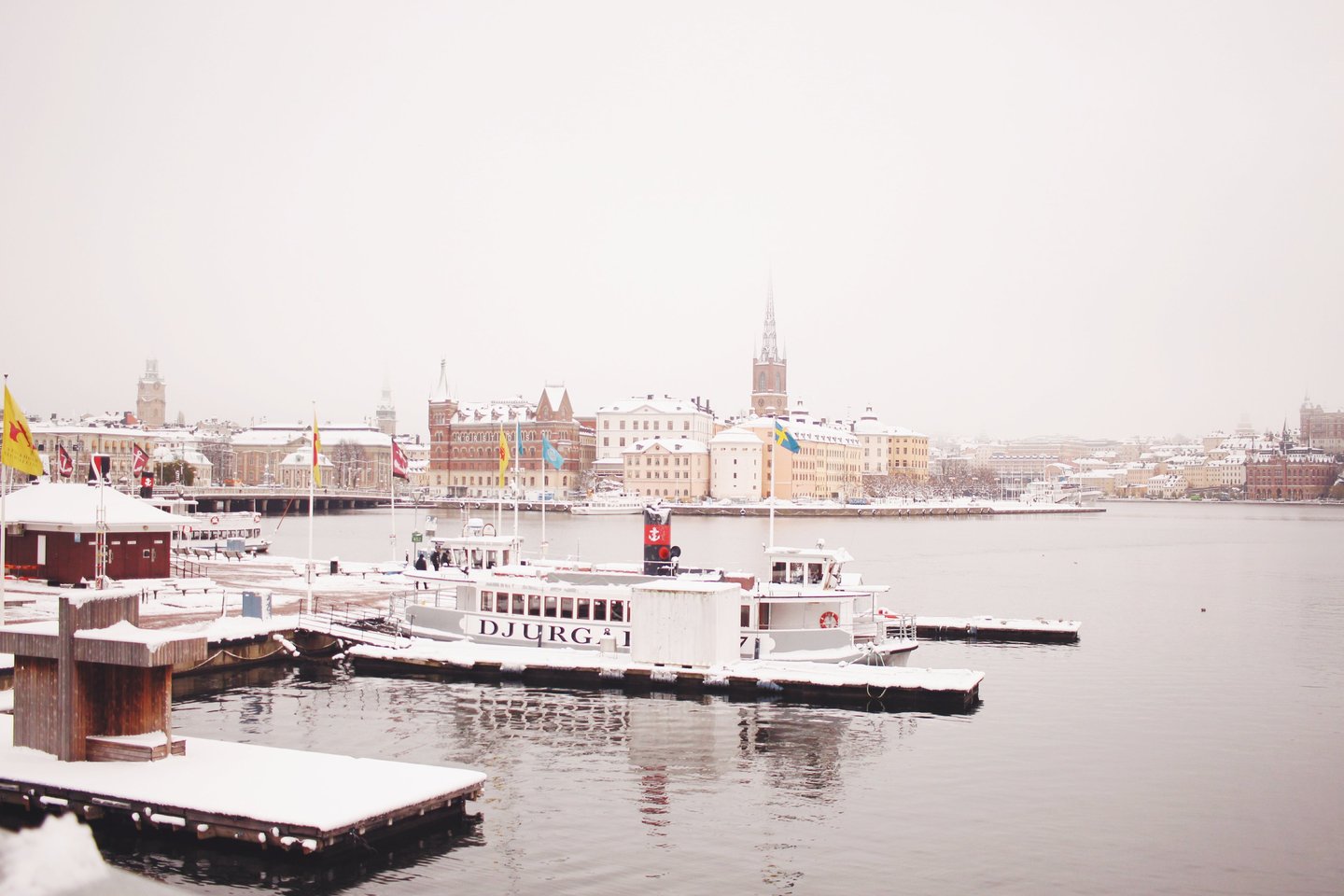

Stadshuset, Stockholm’s town hall, is one of the city’s main symbols since it was built in the early 20th century. It stands proudly on the edge of Kungsholmen, another district of the city. On very quiet days, when the water is completely still, you can see a perfect reflection of it from Riddarholmen. Here it was pretty to notice how the thousands of red bricks of the buildings were standing out in the white and grey surroundings.

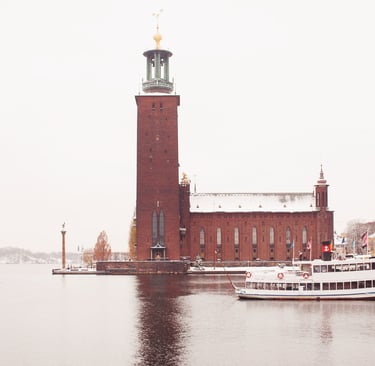
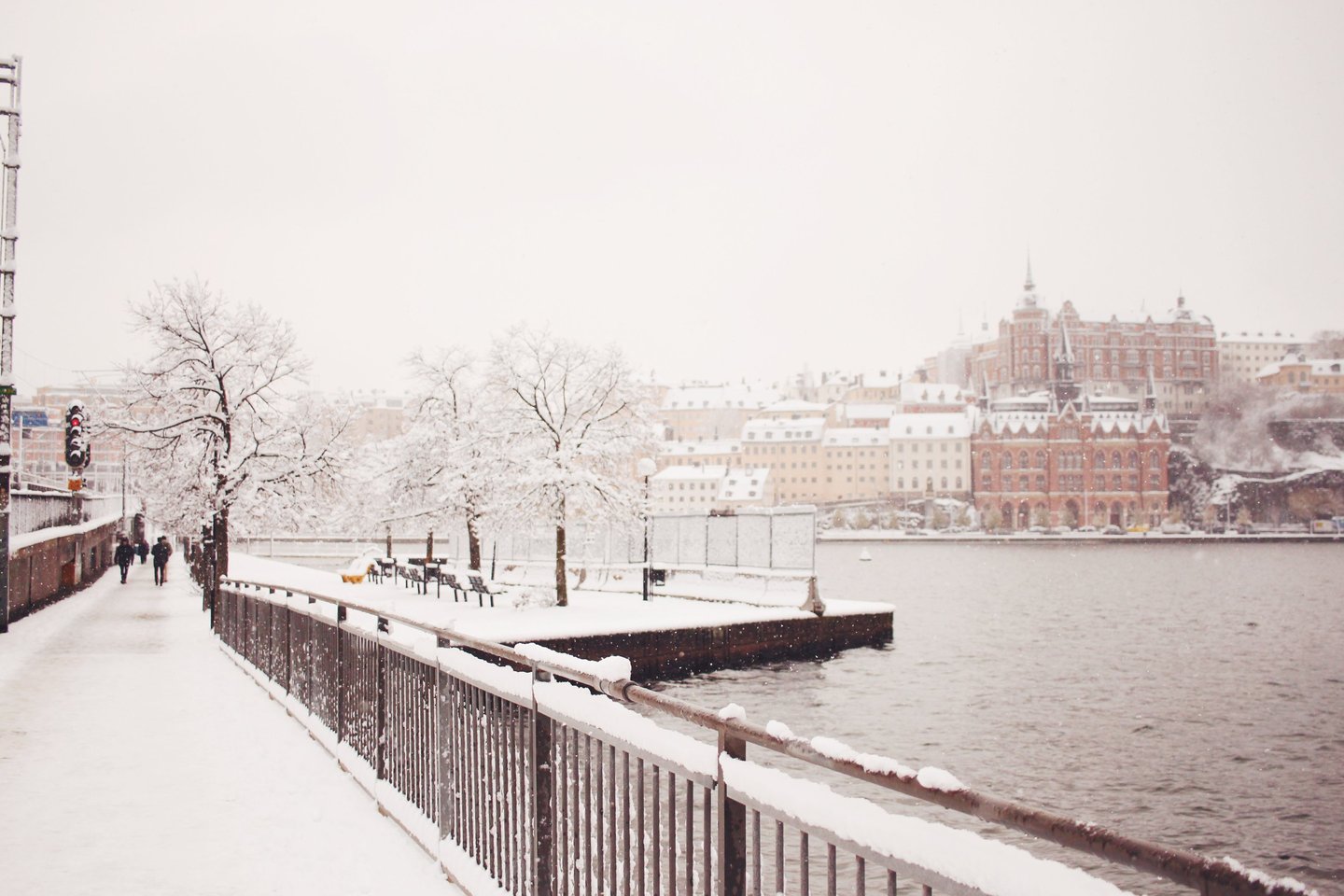

And then, from the Northern shore of the Mälaren, we took the Centralbron (Central bridge) to cross the lake and reach the Southern side and Södermalm. The snow made the entire landscape blend into one colour, a mix between white and grey, and sometimes it was hard to tell the difference between sky, water and land. The city still seemed half asleep, and the creaking sound of our feet stepping on the snow was the only noise that was breaking the muted silence.
SÖDERMALM
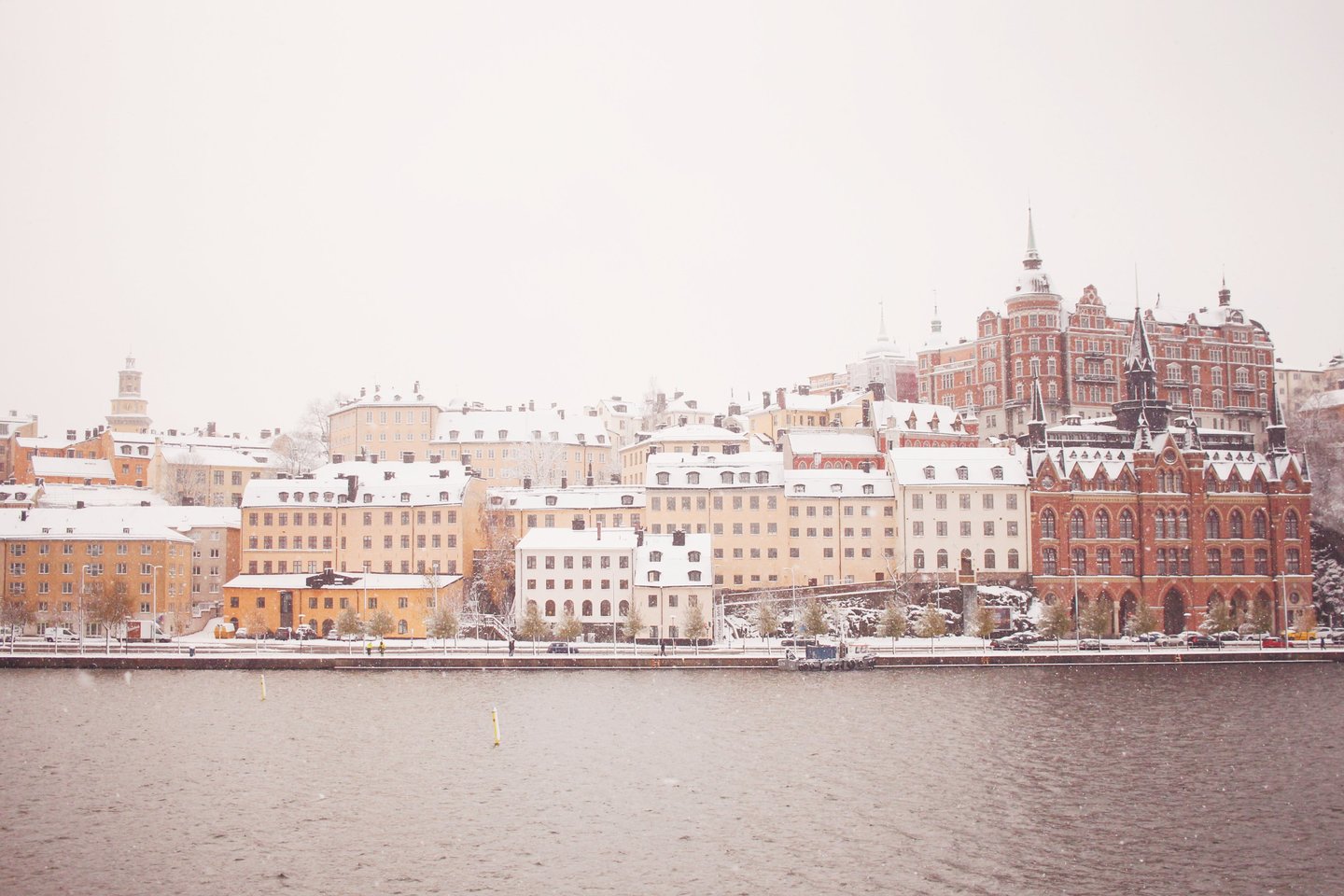

I’ve always liked the view you get when crossing Centralbron over to Södermalm. There’s something magical about these yellow, gold and rust-coloured buildings lined up and piled up on the shoreline, about the snowy roofs and spires. It’s also the first view I had of Stockholm when I arrived by train from Gothenburg (on the other side of the country) on my first visit in 2015-2016. Maybe that’s why I like it so much, I was really impressed by this view back then. To me these houses just feel like a small town made of gingerbread and powdered with icing sugar on top of it. A magical town that smells like cinnamon (and thanks to Swedes’ obsession with cinnamon buns that’s almost true) and where it’s always Christmas. Now, if you don’t kow how much I’m still a child within…

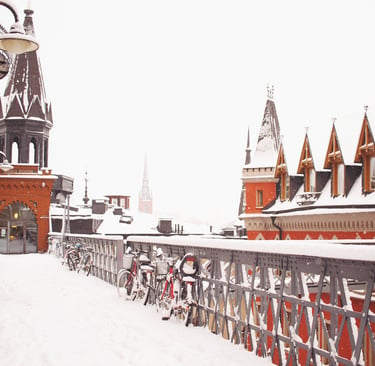




The thing I most enjoyed about the district of Södermalm was climbing up Mariaberget, a small hill dotted with golden, orange and yellow houses, to reach Monteliusvägen, a somewhat hidden passageway to a vantage point over the city. That day, the slopes and stairs to get there were of course covered with ice and snow, and thus very slippery. We didn’t meet many people in Södermalm, it was as if the snow had made the whole city suddenly very sleepy and the only persons we crossed path with were proceeding with caution to avoid slipping and falling, and watching each of their footsteps, just like us. Even the bikes were not at work that day. After going up the hill you find the signs for Monteliusvägen and just have to follow them. They lead to a narrow footpath overhanging the steep cliffs of the Northern shore of Södermalm. From up there you get amazing views over lake Mälaren, Kungsholmen and the City Hall, Riddarholmen and Gamla Stan. (see below)
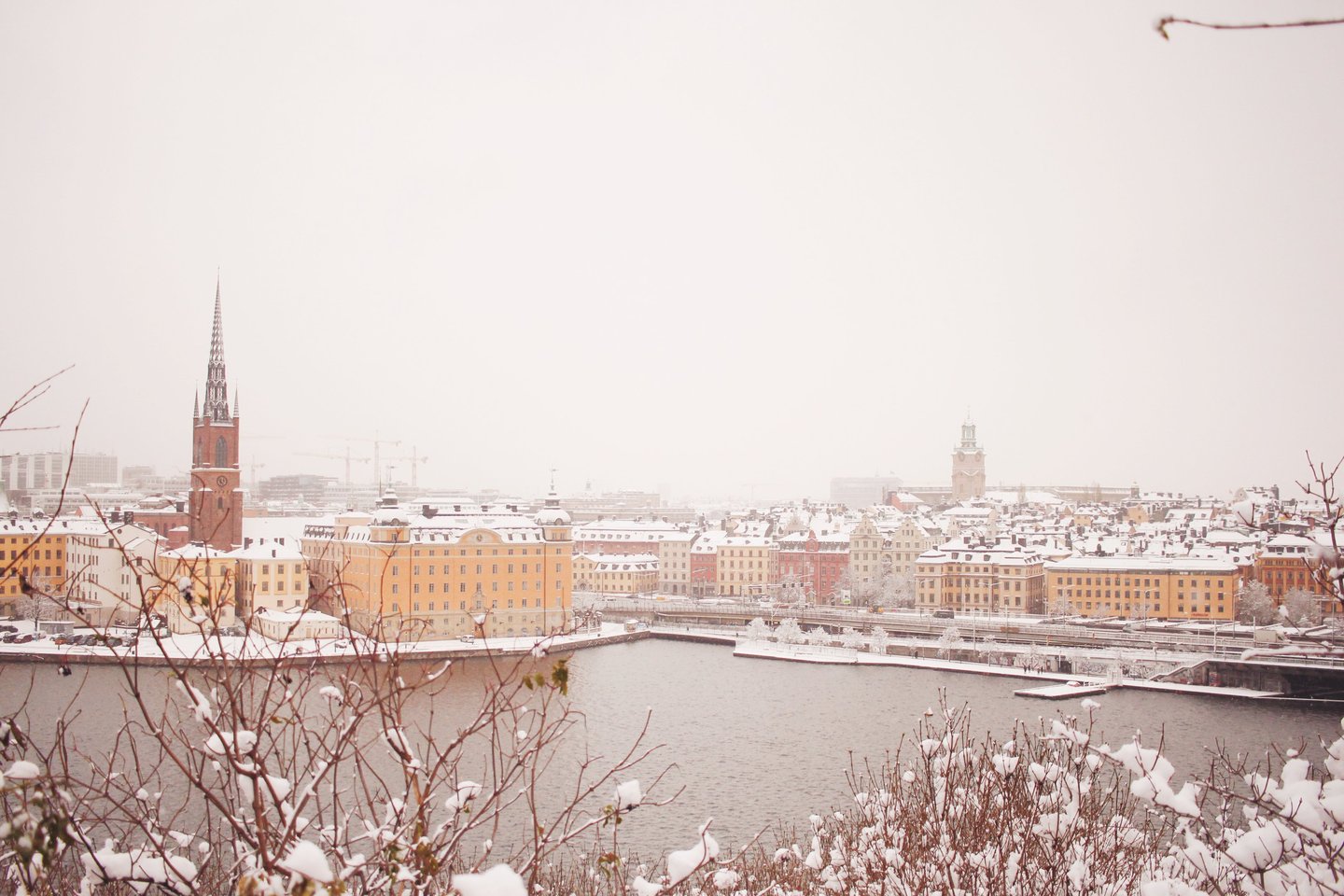

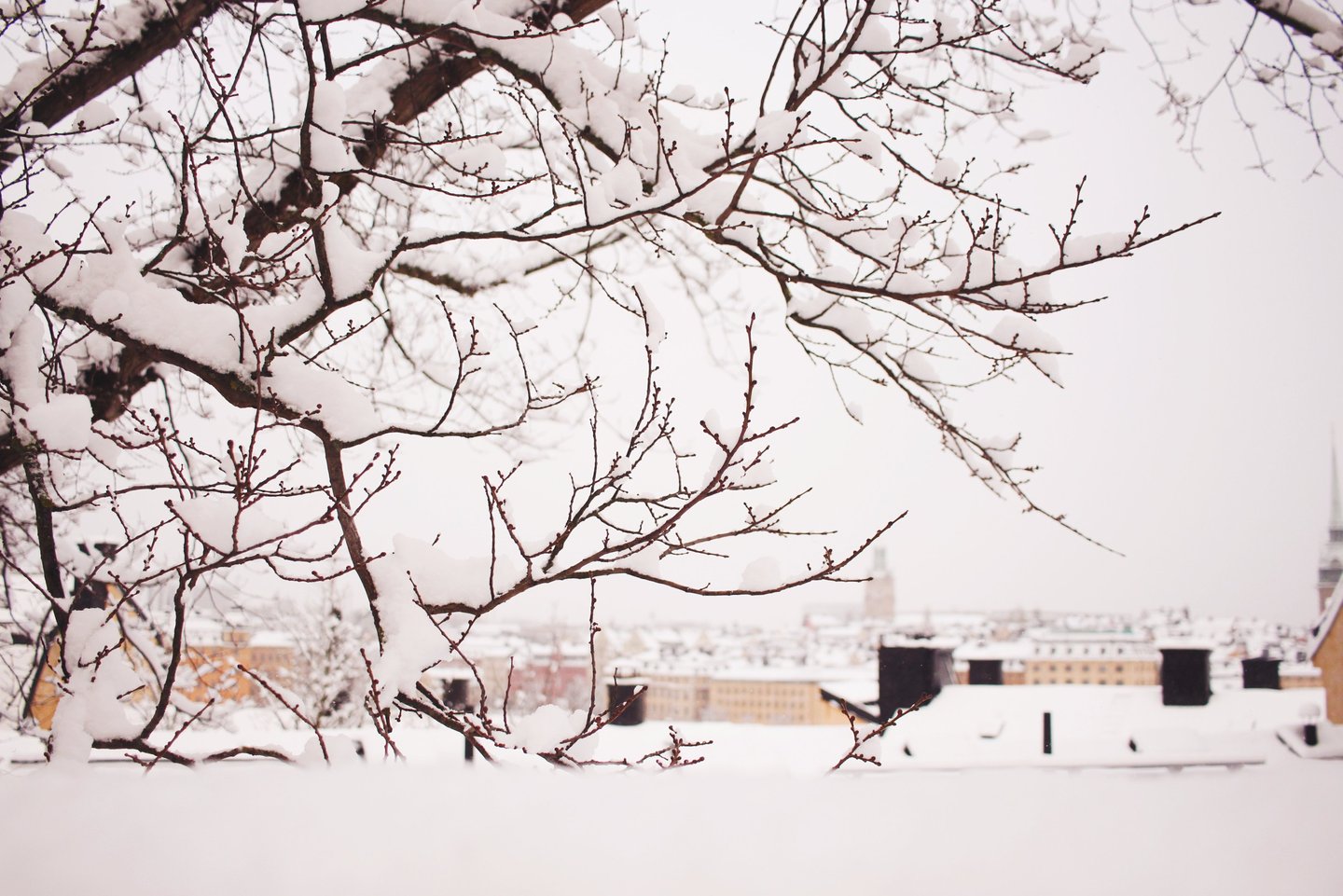

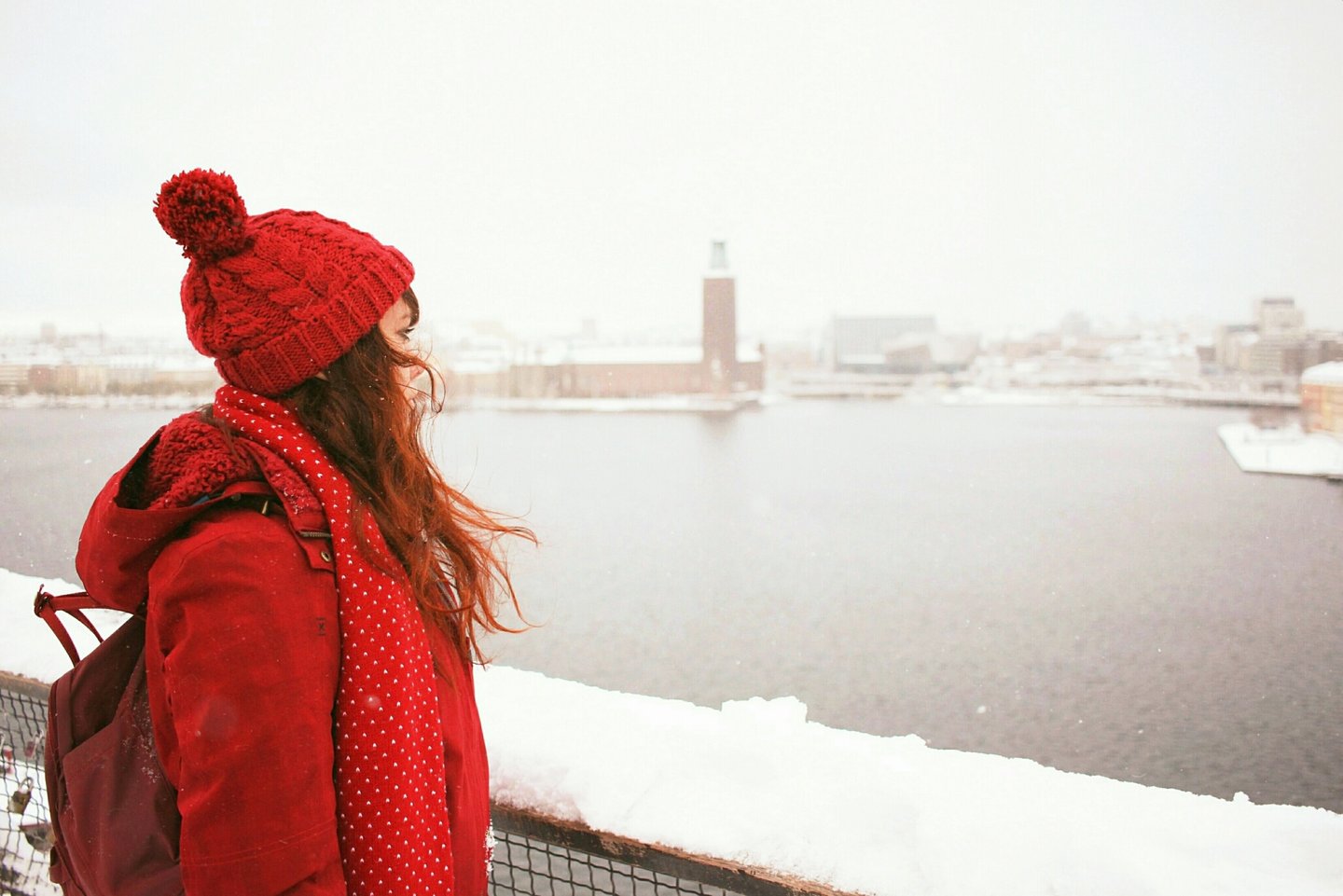

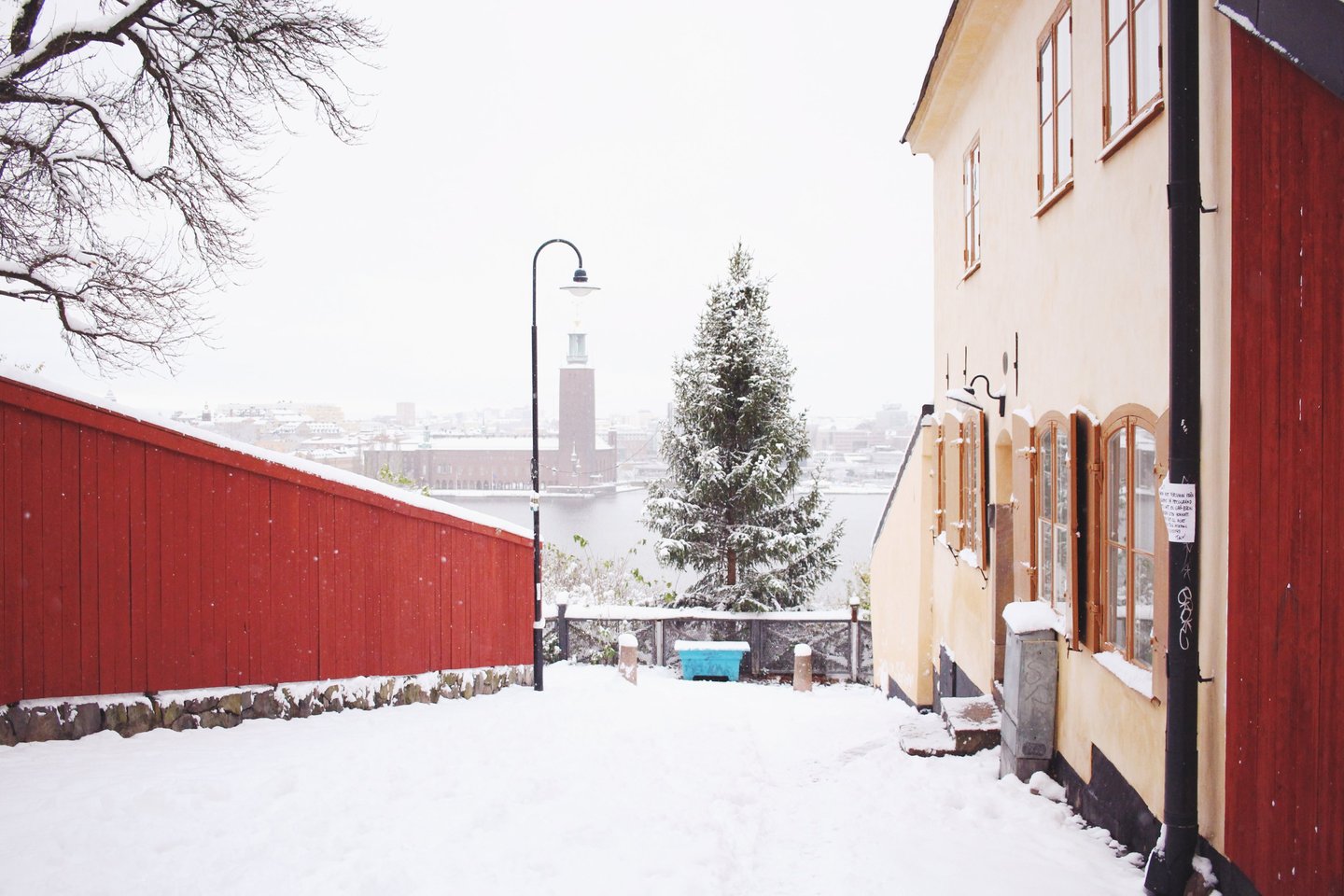

On both of the pictures above you can glimpse the City Hall, Stadshuset, in the background. I especially love the picture just above. There’s something about it that feels very Christmassy to me. I don’t know, maybe it’s the red-painted wooden walls, so typically Swedish and Scandinavian, maybe the huge Christmas trees… Probably a combination of all those elements together.


There are many old quaint houses along the footpath of Monteliusvägen. There, you can see the gingerbread houses I was telling you about a bit earlier!
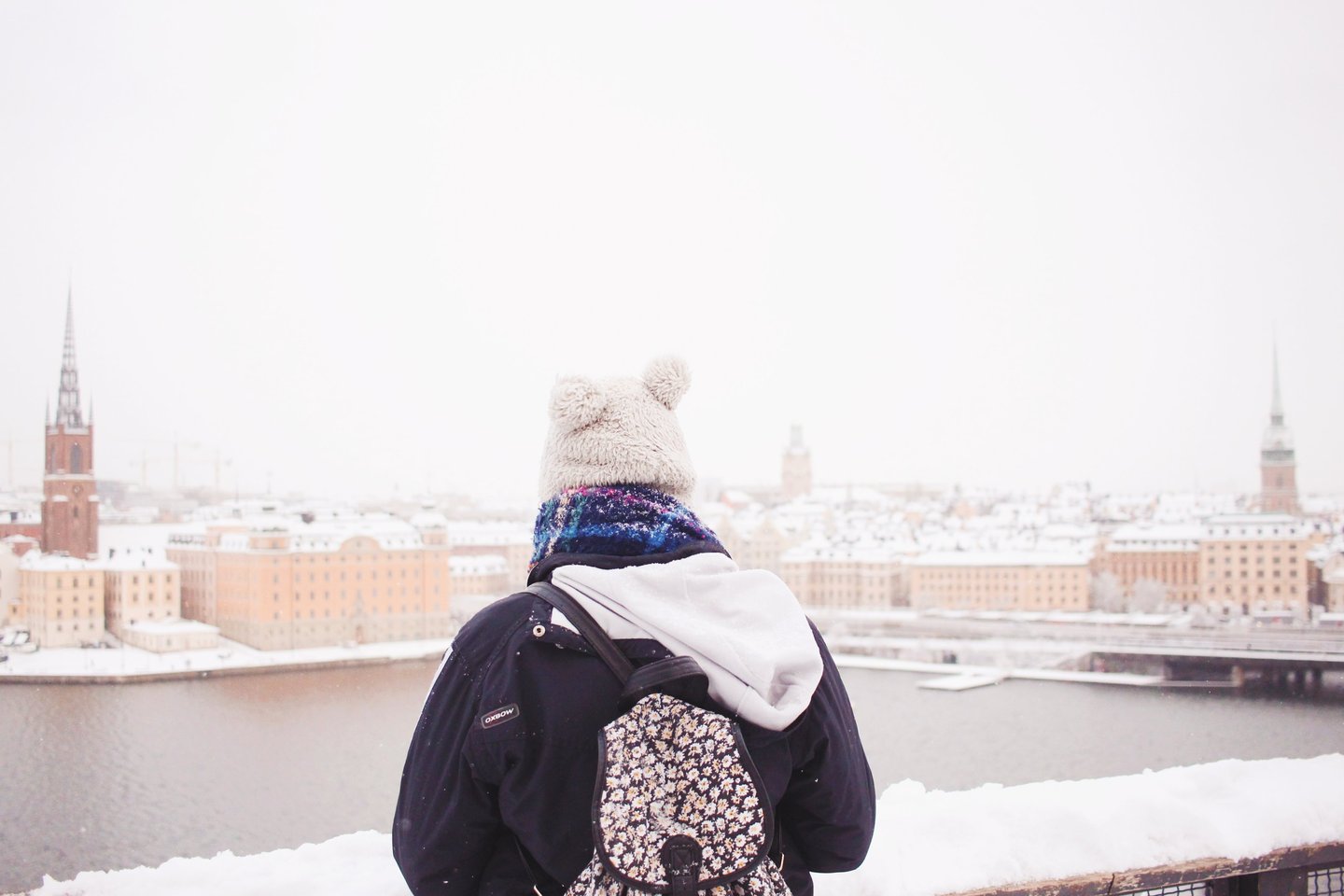

View over Riddarholmen and the beautiful spire of its church, together along with the characteristic waterfront of Stockholm. From there you can easily understand why the city is often nicknamed the Venice of the North.
I really love going to Monteliusvägen. It’s a peaceful stroll, quiet and a bit off the beaten track, and a way to get a sweeping panorama over some of the most beautiful part of the city.
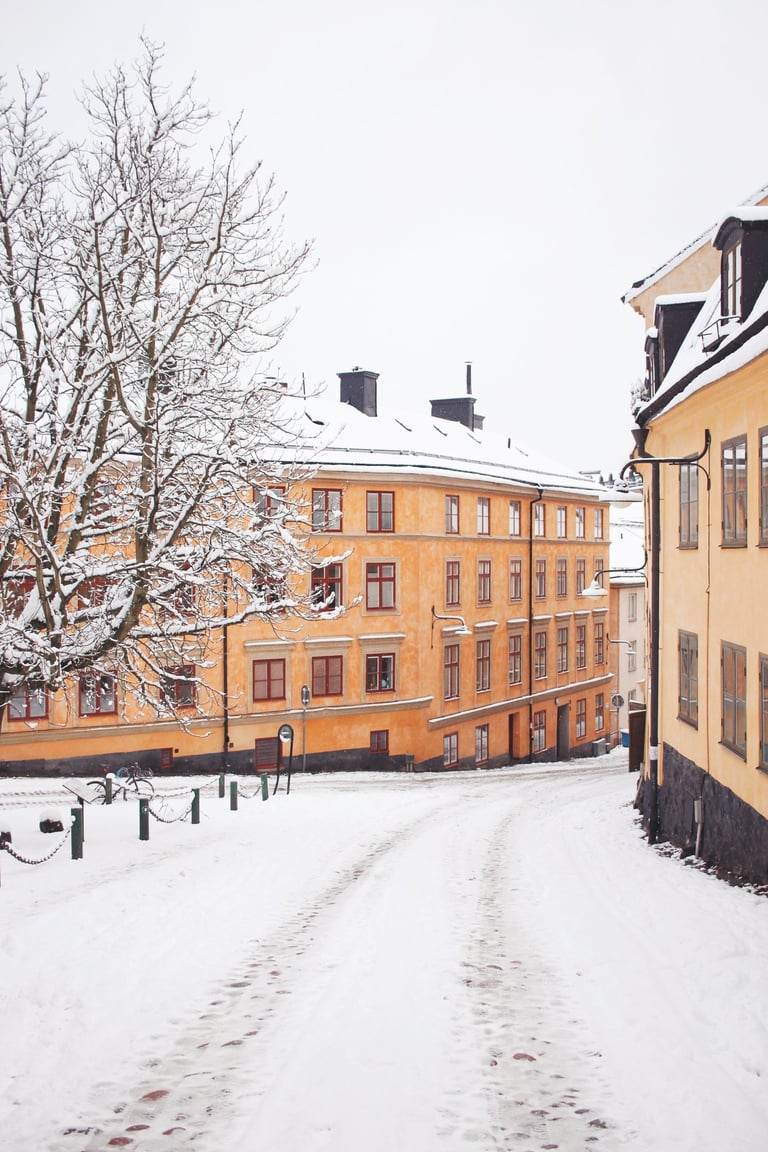
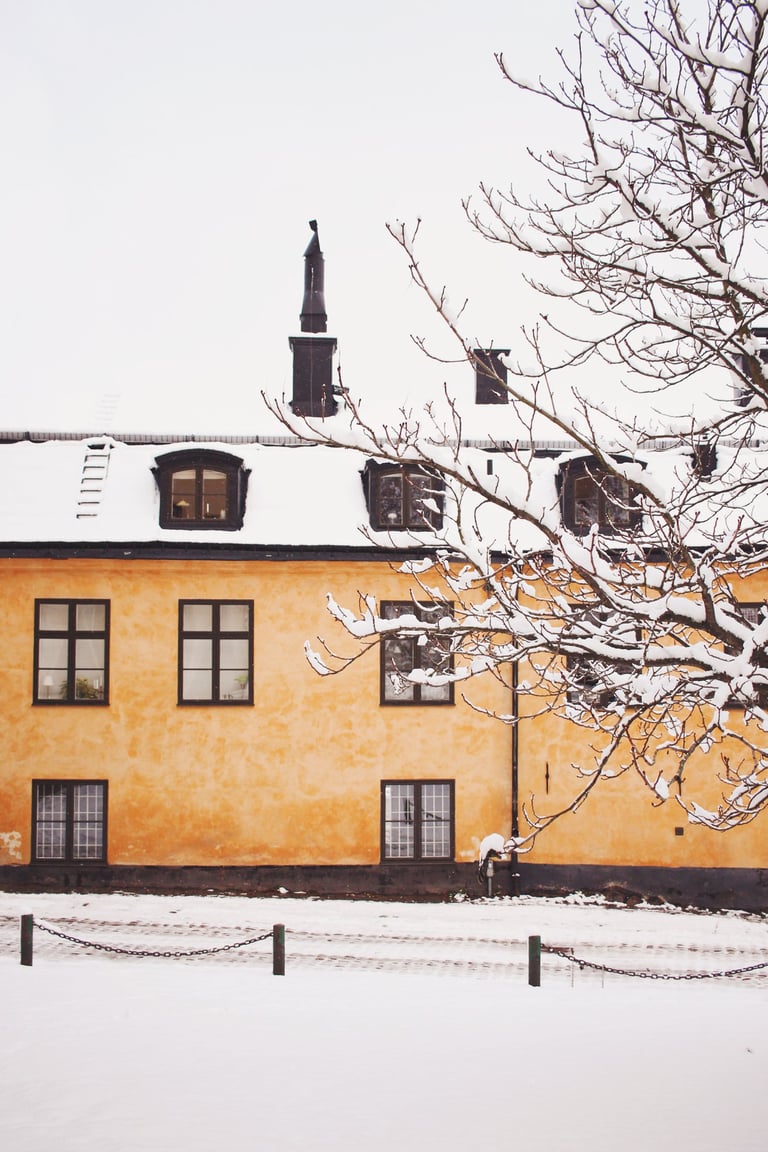


Going down from Monteliusvägen, along the winding cobbled streets of Northern Södermalm. I love the hues of the houses so much there.

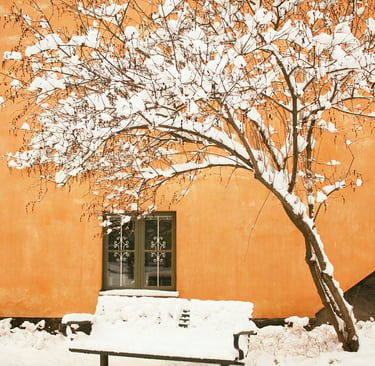
After that we headed towards the eastern part of Södermalm, still following the northern waterfront from above, to reach Katarinahissen, an old elevator located above Slussen (the biggest road interchange of the city) which was first built in 1890, to connect the lower streets of Slussen to the heights of Södermalm, some 50 meters above. From the footbridge that leads to the elevator, you can get some amazing bird eye views over the buildings and houses of Södermalm. You get it now, Stockholm is all about the views! On the picture just below you can see the Stadsmuseum (the city museum) which is the white building in the right corner.
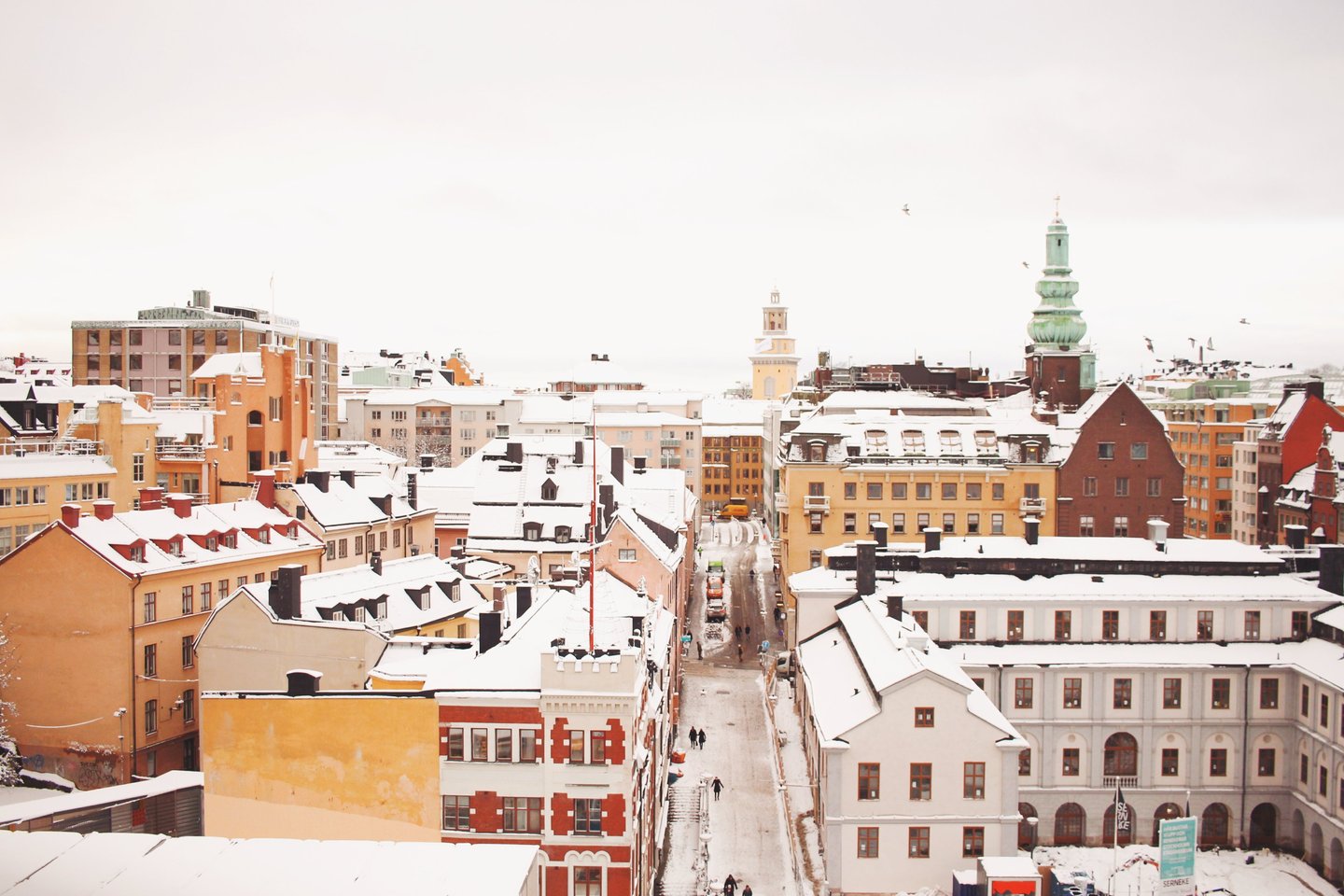

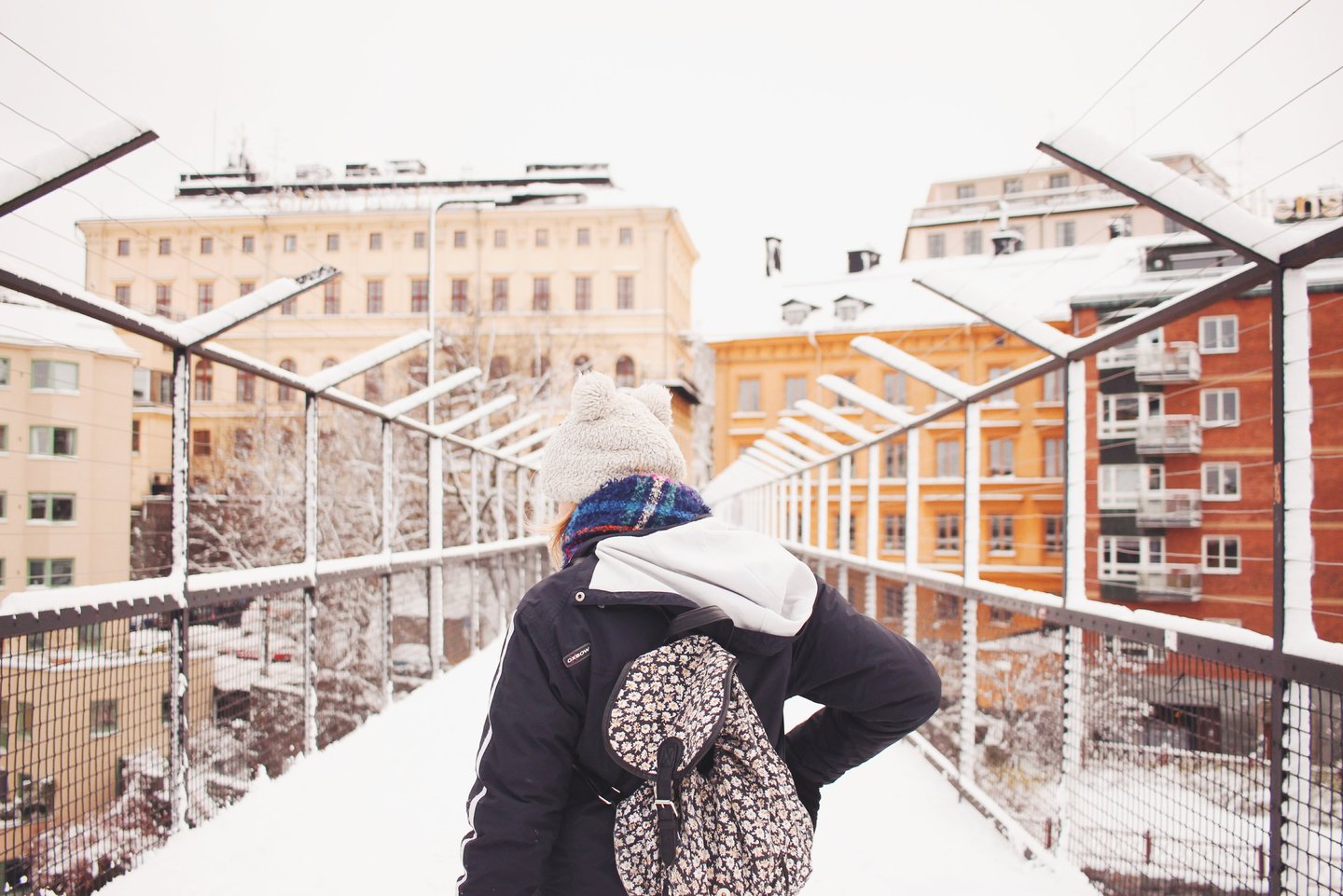

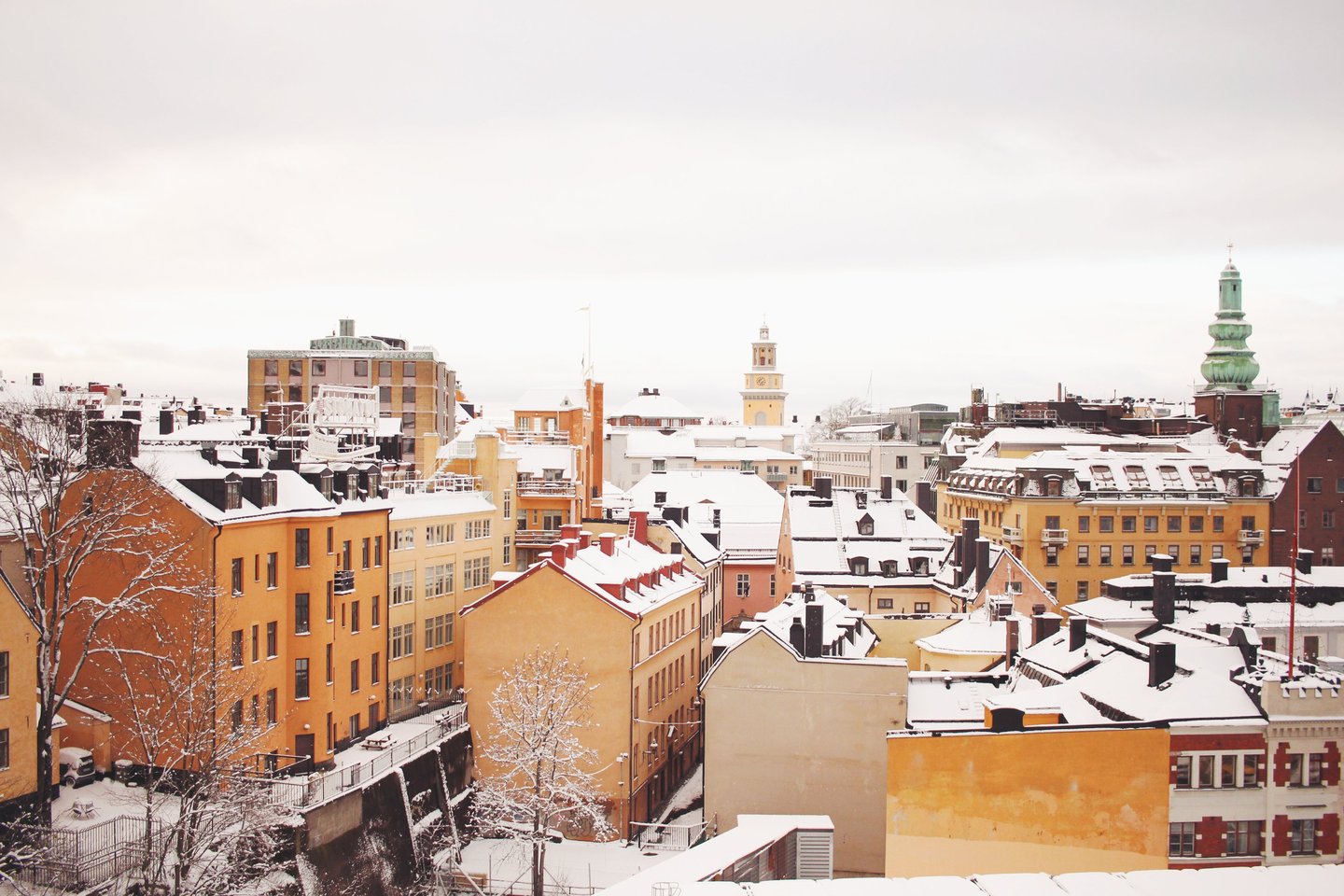

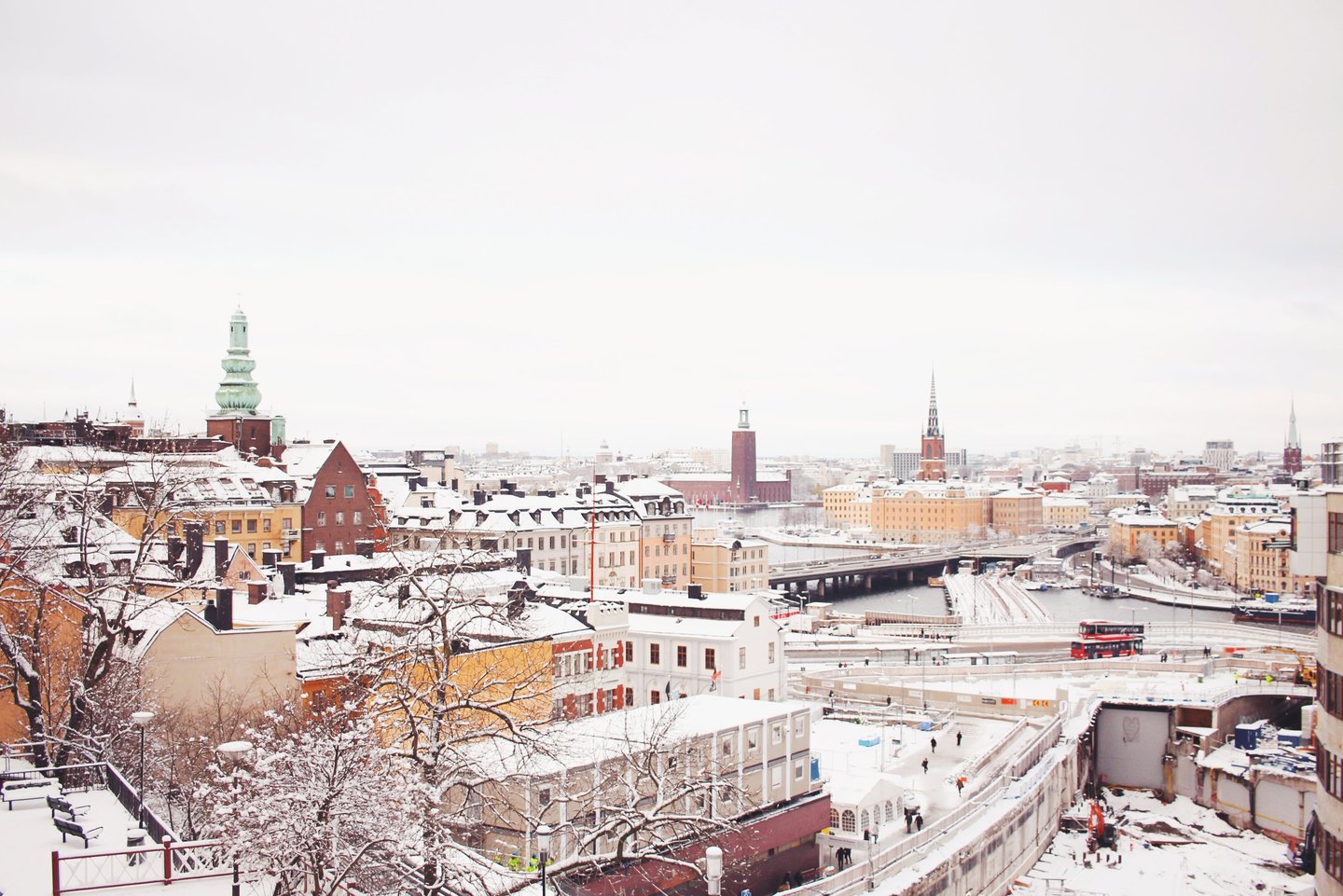

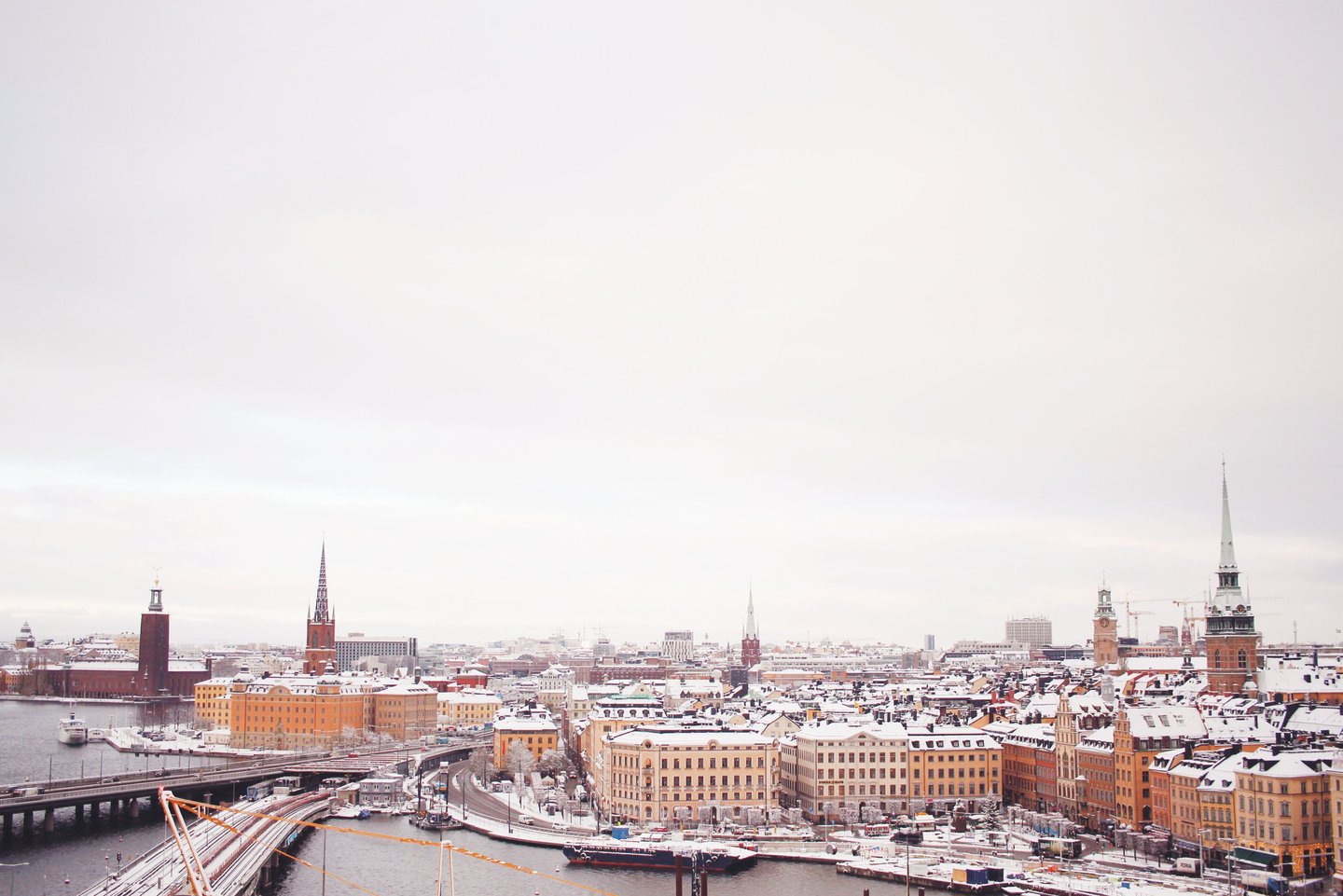

Above: view from the end of the footbridge of the elevator, over Slussen below and Kungsholmen, Riddarholmen and Gamla Stan. There were a lot of construction works in Slussen but the view is still good on my opinion: snowy rooftops, high spires, the Northern sky that opens up before us.
After Katarinahissen we left the tip of Södermalm to visit more of the streets laying behind it and headed towards a part of the district called Fjällgatan. This is a more historical part of the city that still reflects today the period when Södermalm used to be the workers’ district. People who used to live there in the 1800s and 1900s, as the industralisation was well underway in Sweden, were working in factories and couldn’t afford to live in huge and beautiful buildings. Most of them were living in tiny wooden cottages and small houses, made of wood (despite the threat of fires being high in those days) and painted in the traditionnal Scandinavian red. The oldest house here dates back from 1727. I love how these houses, with their bright colour, their high chimneys reaching into the sky, and their lovely window frames, remind me yet again of a story book. There’s something strange about this area, lined with houses and buildings that all have different shapes and colours, and this create such a special atmosphere. I can’t help while wandering those streets but ask myself how people used to live here before. I love places like these which still feel steeped in history, unscathed and untouched, as if no time had passed at all.
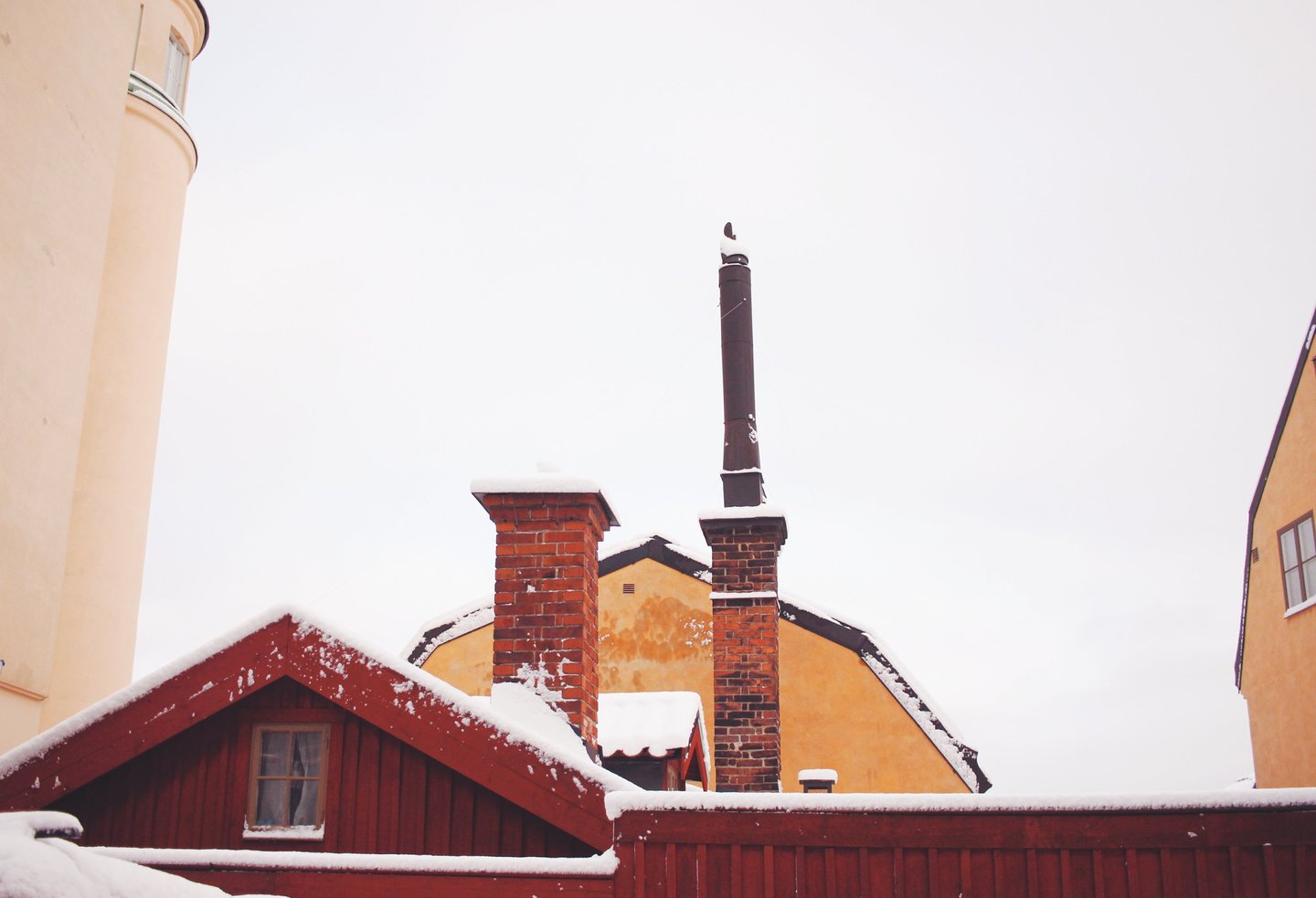





These blocks of traditionnal wooden houses are called kåkar in Swedish and they were saved from destruction and renovated in the 1970s. Before that, they were lacking modern comfort in every way : no electricty, warm water, isolation, bathroom, kitchen or heating system. It is now a protected area for its historical value. I personnally think that the people who live there nowadays are quite lucky, just look at this house above! (my dream house would look exactly the same)
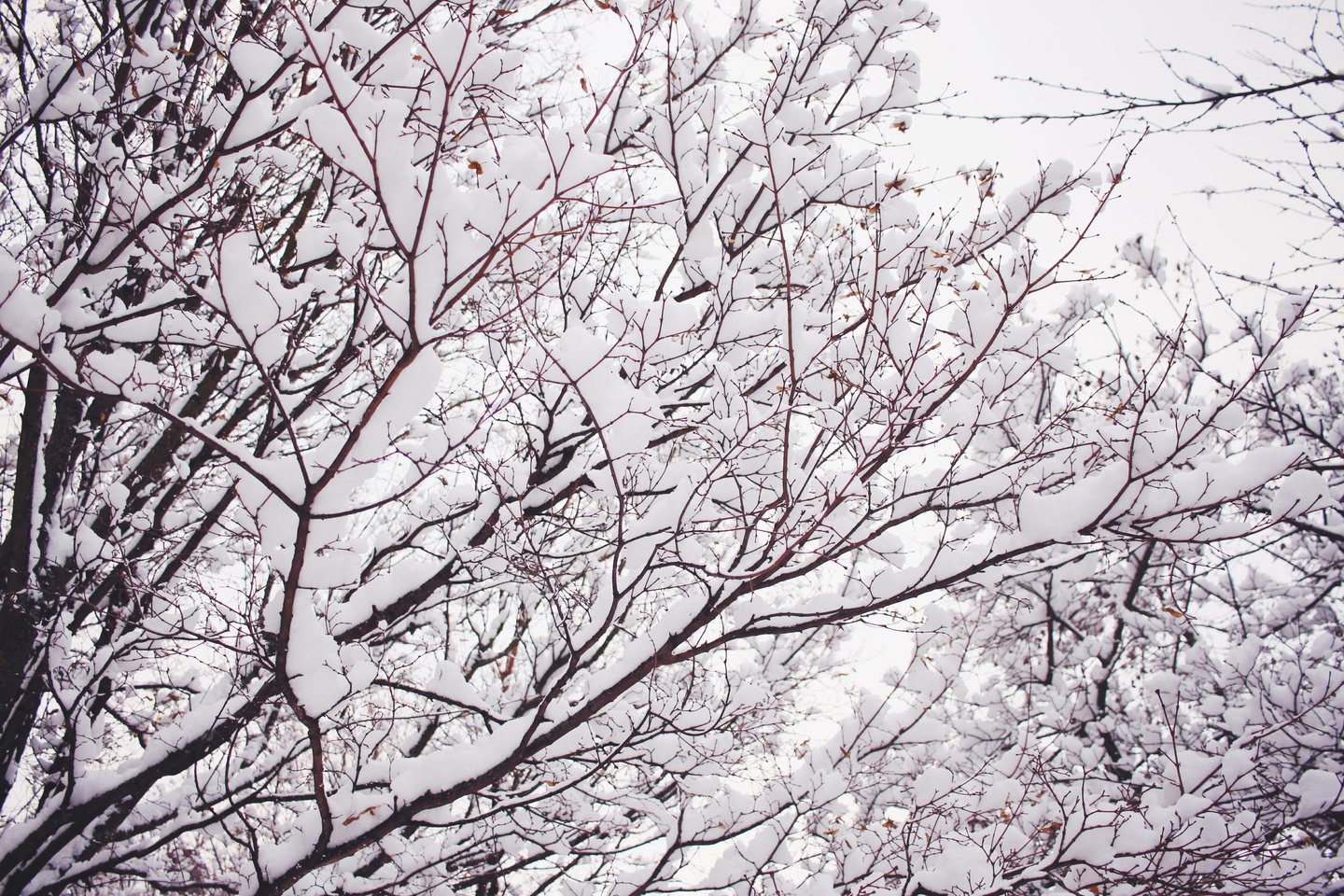

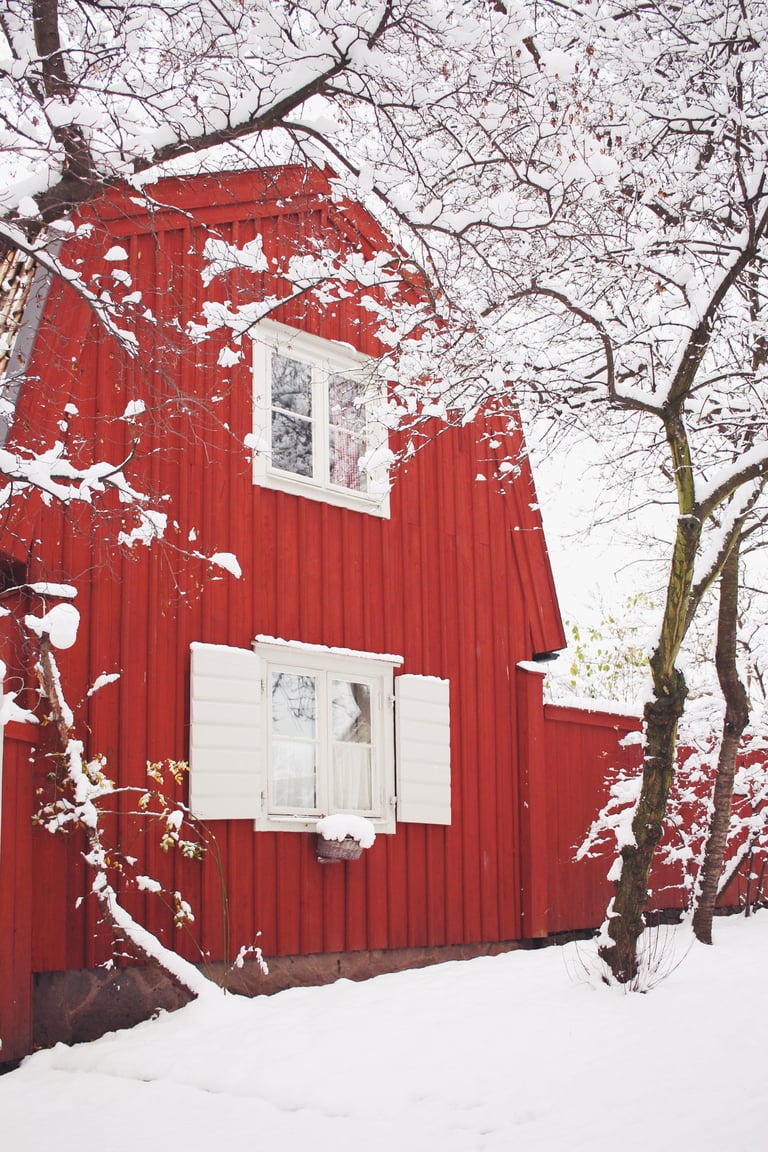
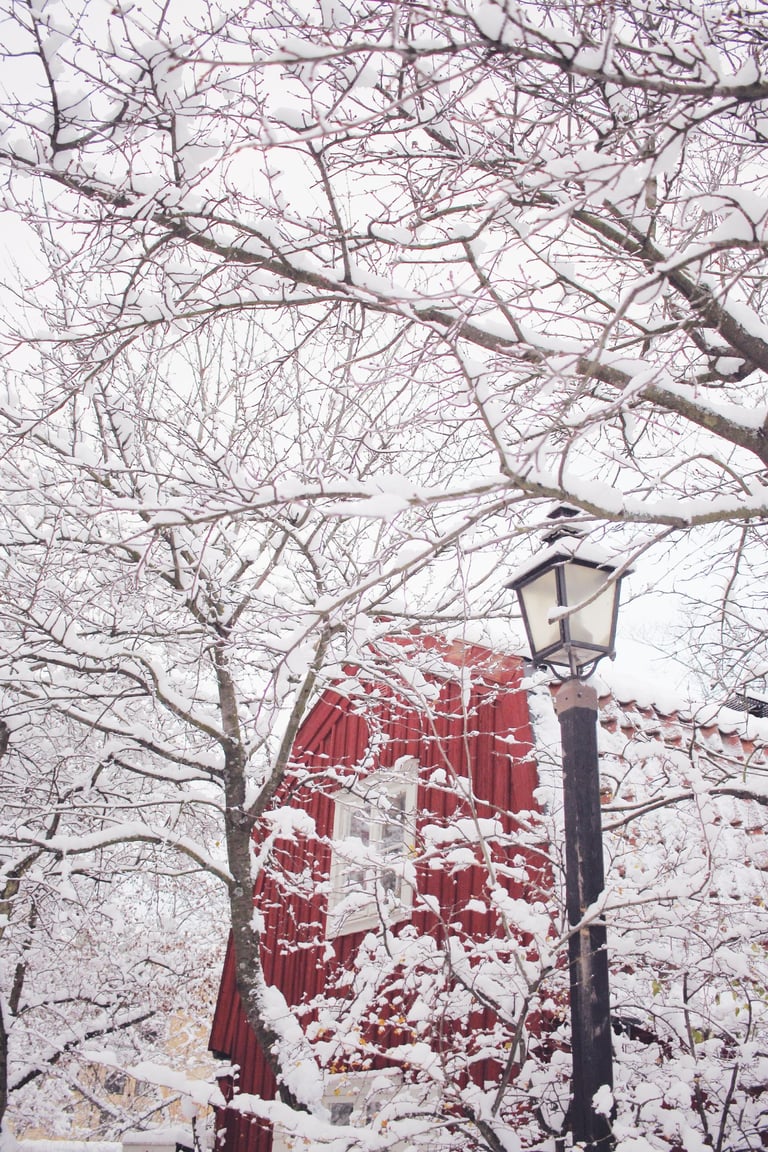


Straight out of Narnia, eh?
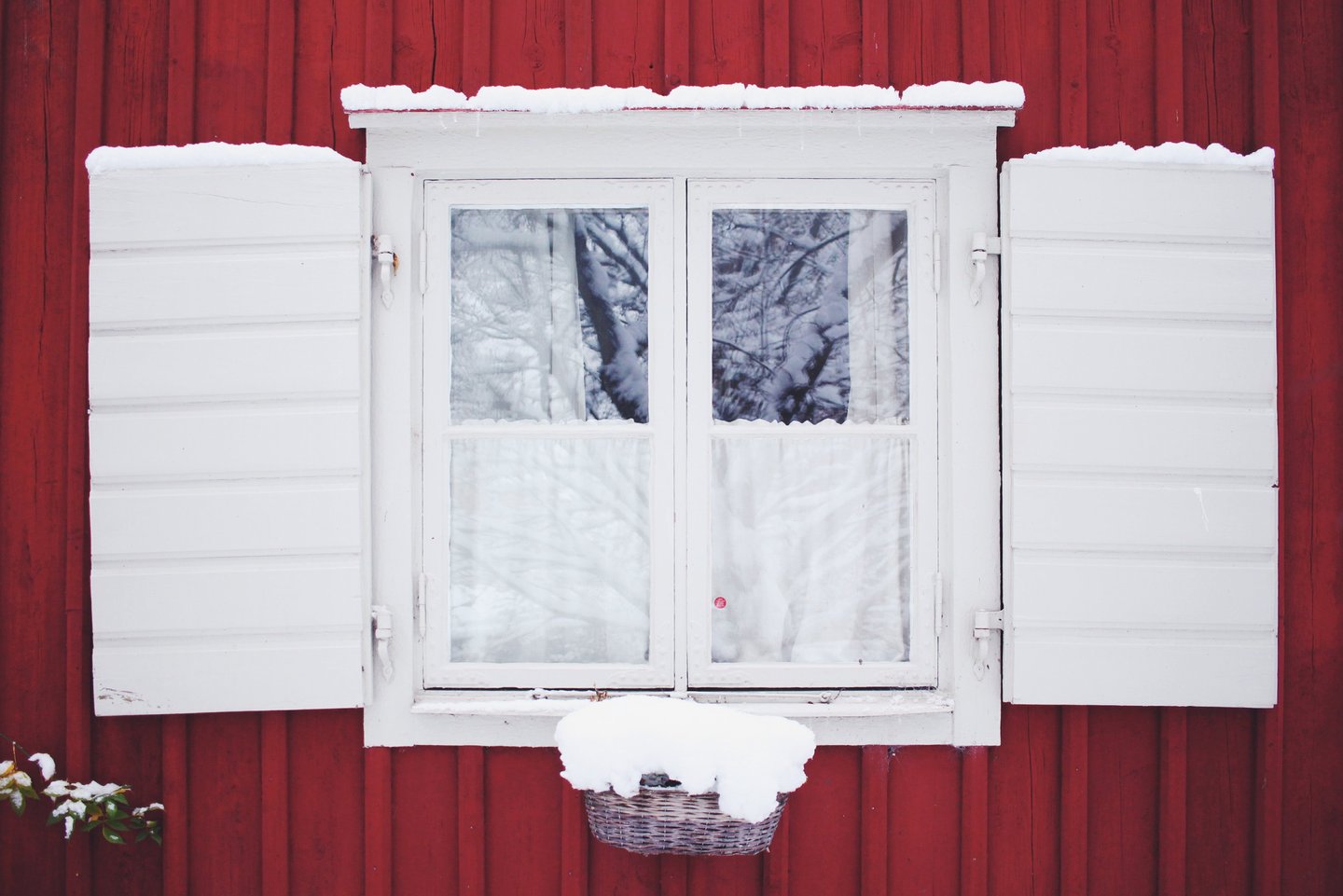

There we are. I hope you enjoyed discovering Stockholm under the snow with me. Quite magical isn’t it? I’m so happy that I was there on the first snow in Stockholm that winter. Sometimes life gives you moments like this, of purity, raw beauty and happiness. Now I know that I will always remember those three days in Stockholm with fondness. I leave you with a quote that I found and that for me evokes very well the feeling I had during this trip in Stockholm.
“It was a fairy-tale world, child-like and funny. Boughs of trees adorned with thick pillows, so fluffy someone must have plumped them up; the ground a series of humps and mounds, beneath which slinking underbrush or outcrops of rock lay hidden; a landscape of crouching, cowering gnomes in droll disguises—it was comic to behold, straight out of a book of fairy tales.” ― From The Magic Mountain, Thomas Mann.

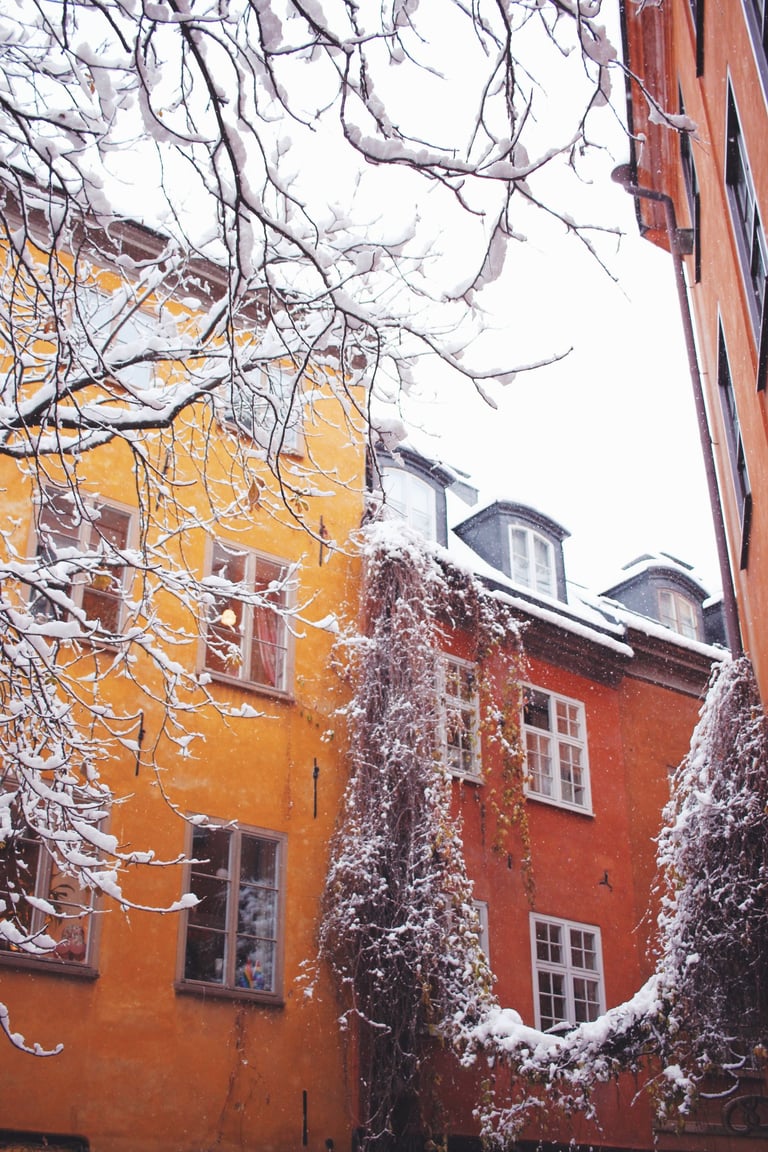
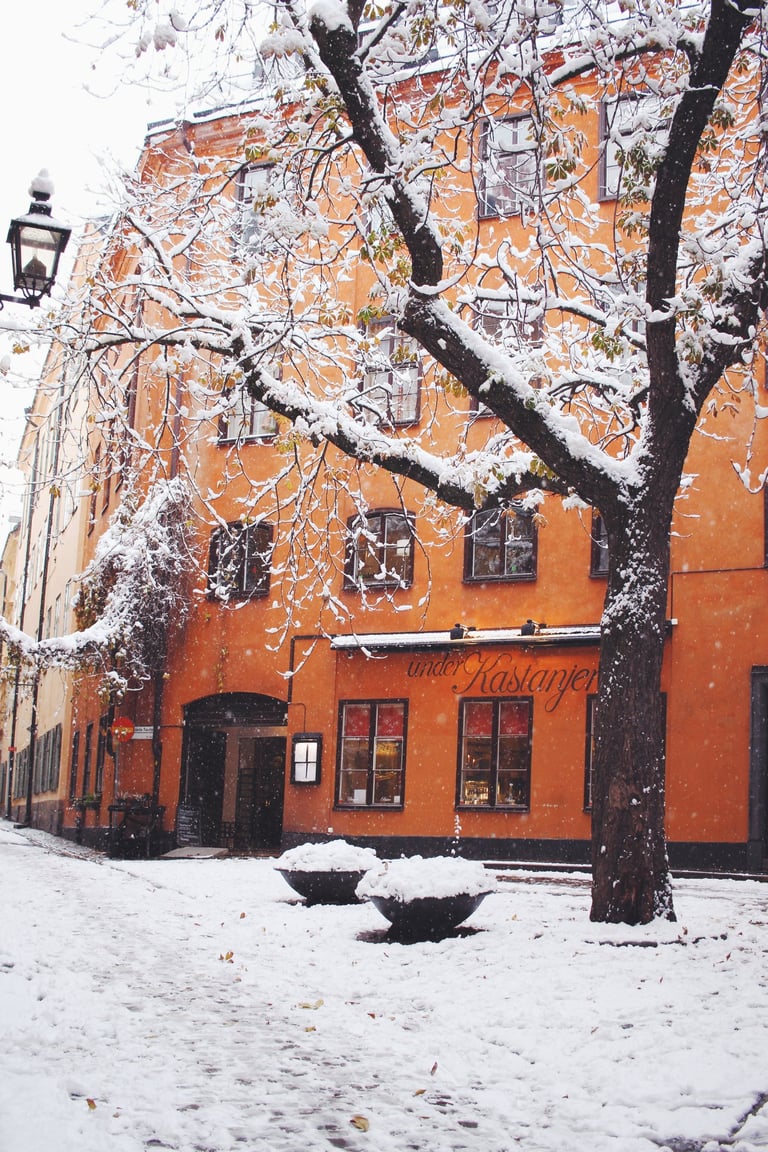
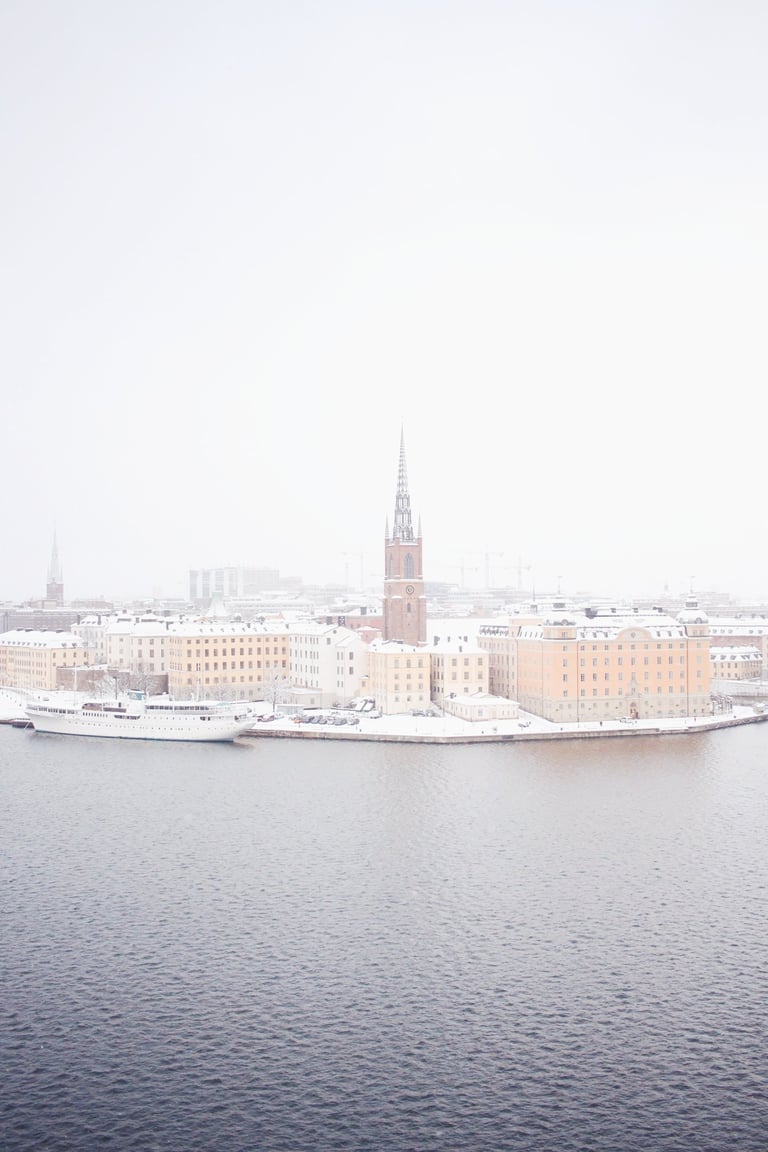

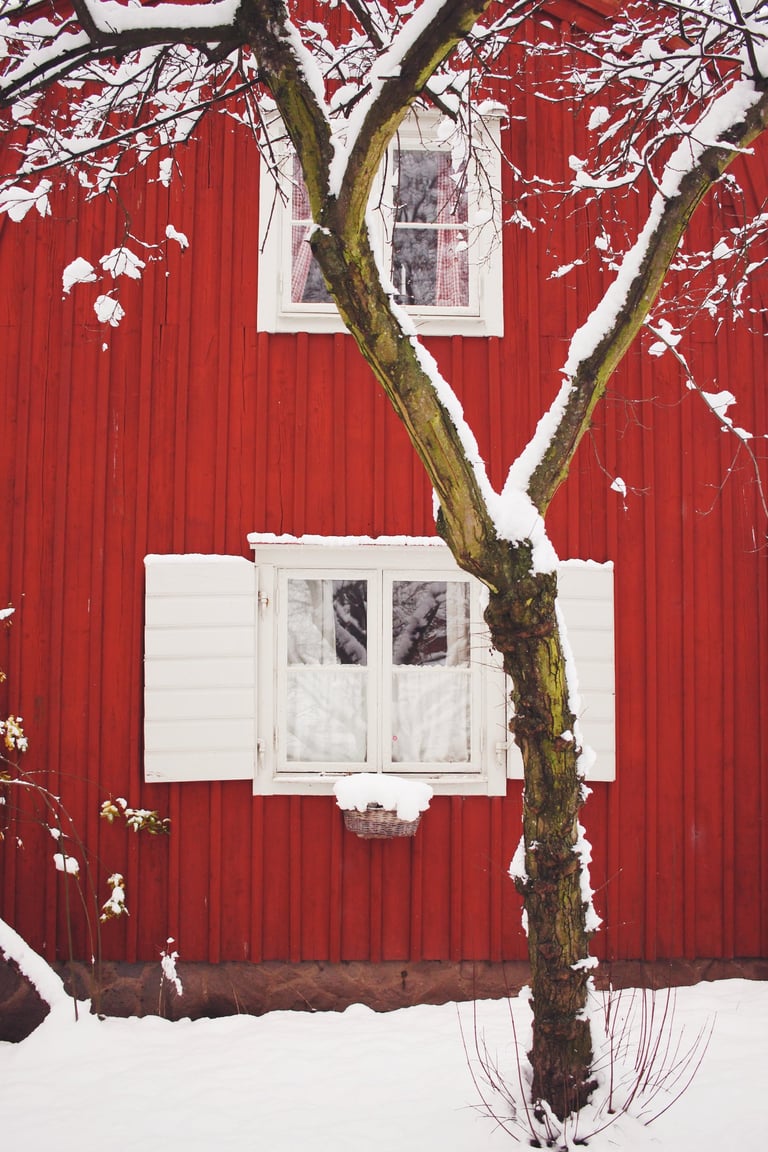

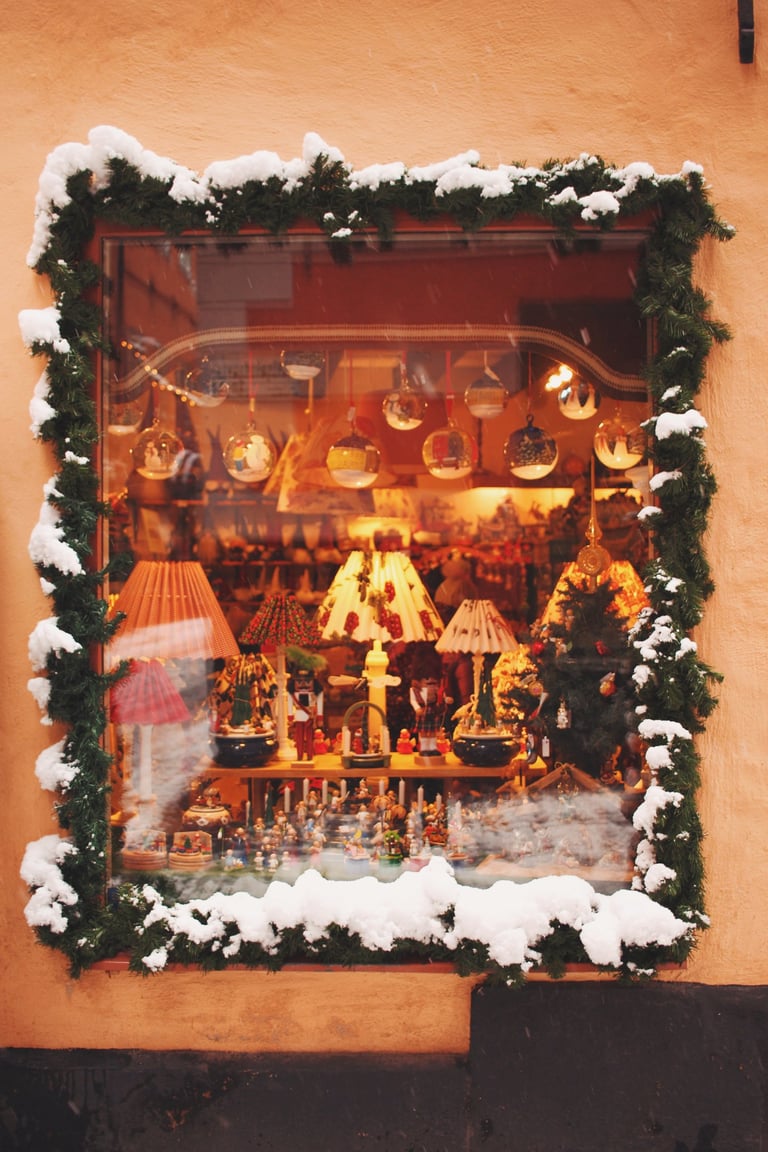
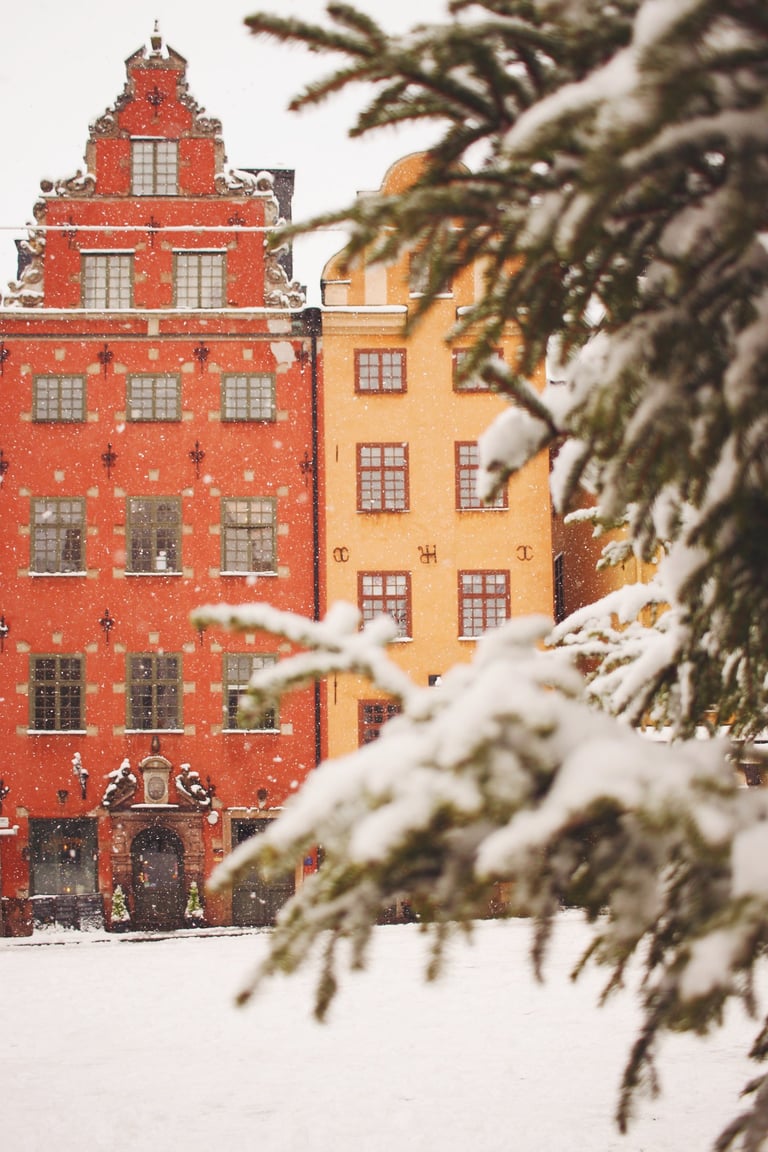
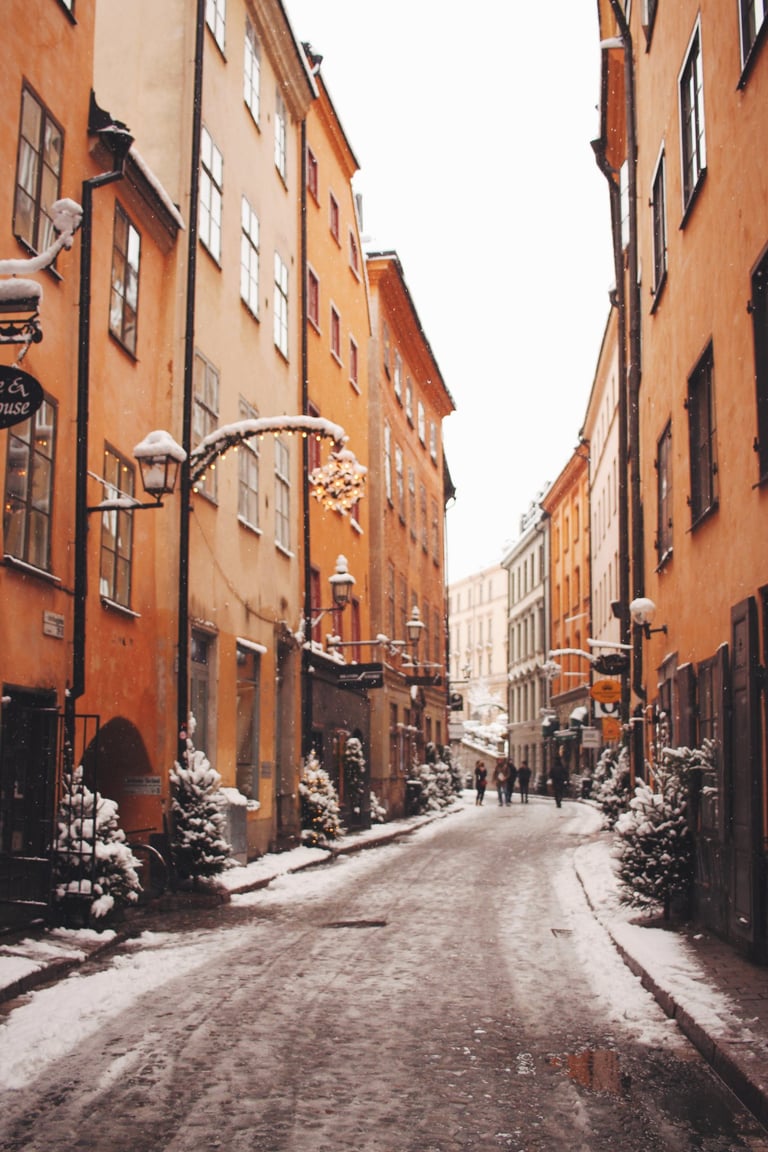

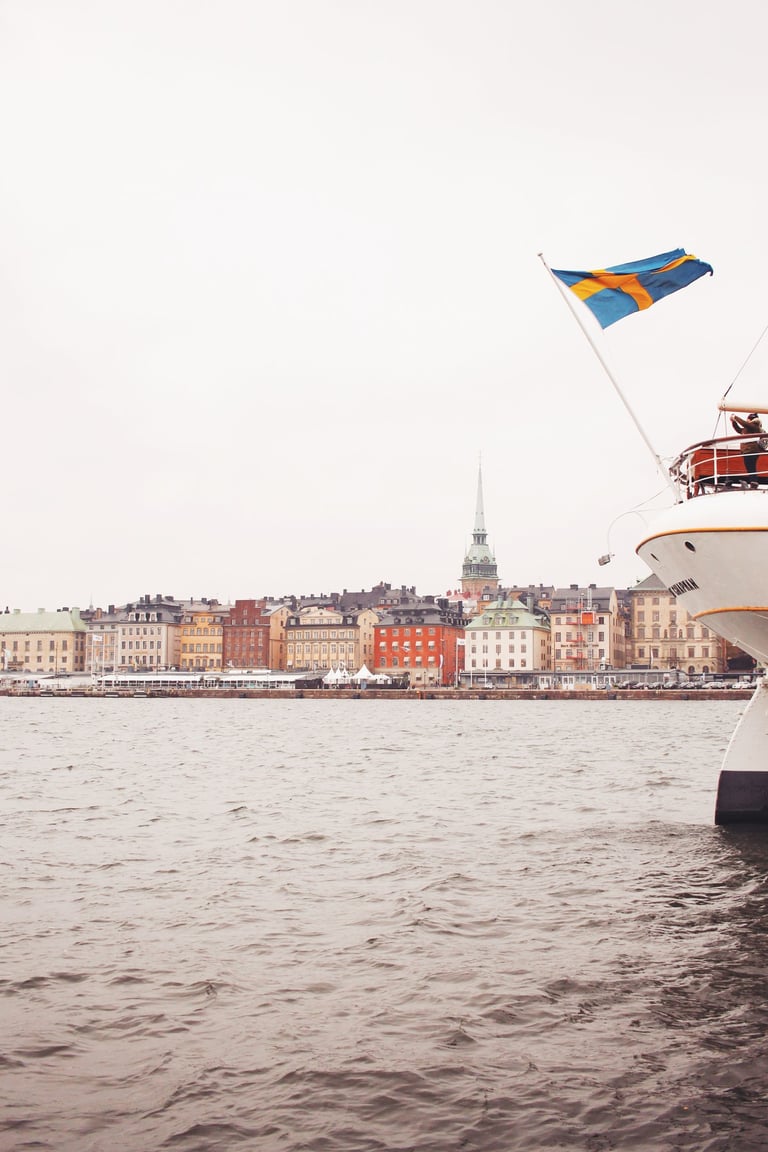
















A STORY BOOK ADVENTURE IN SNOWY STOCKHOLM - 2017
11 min read